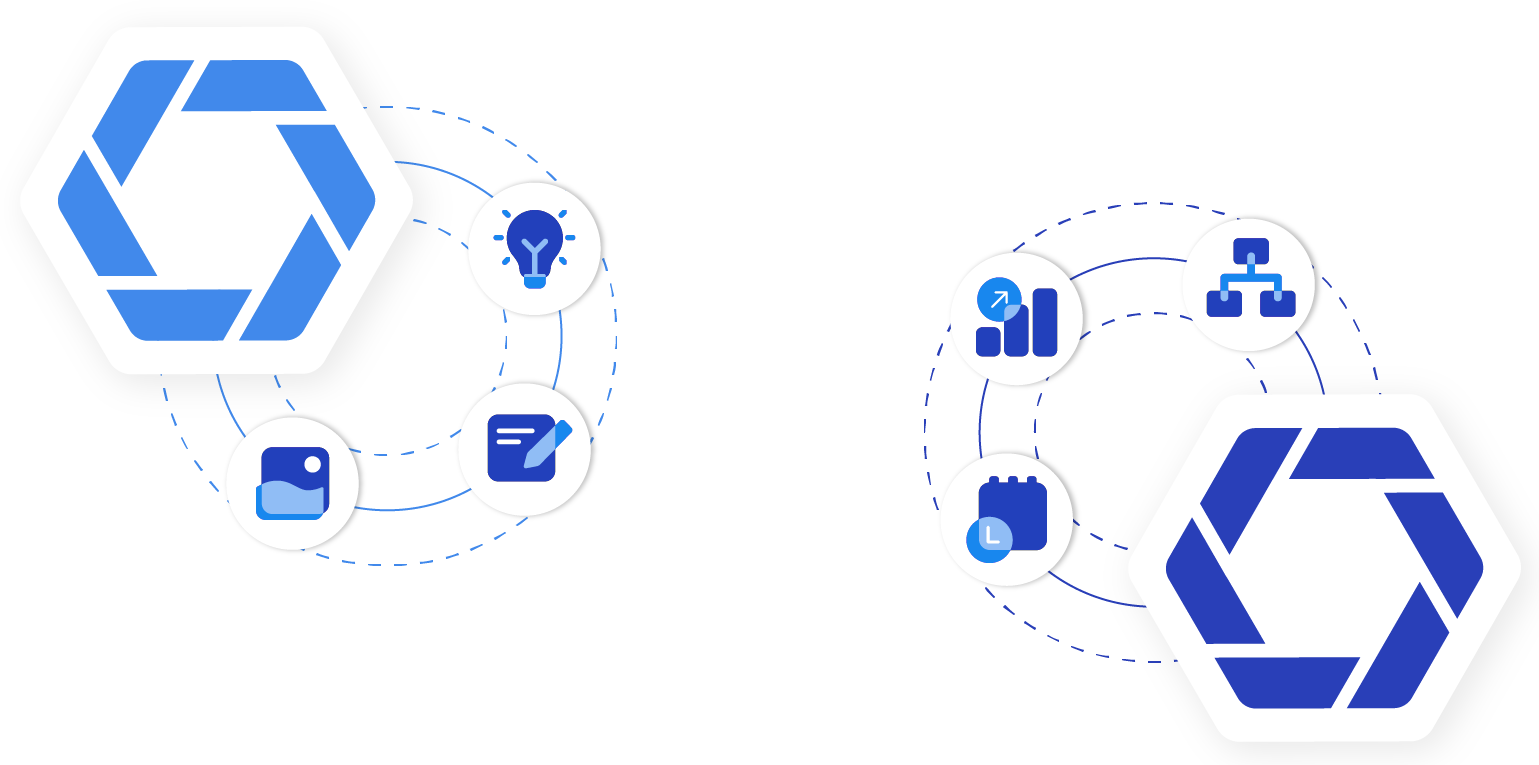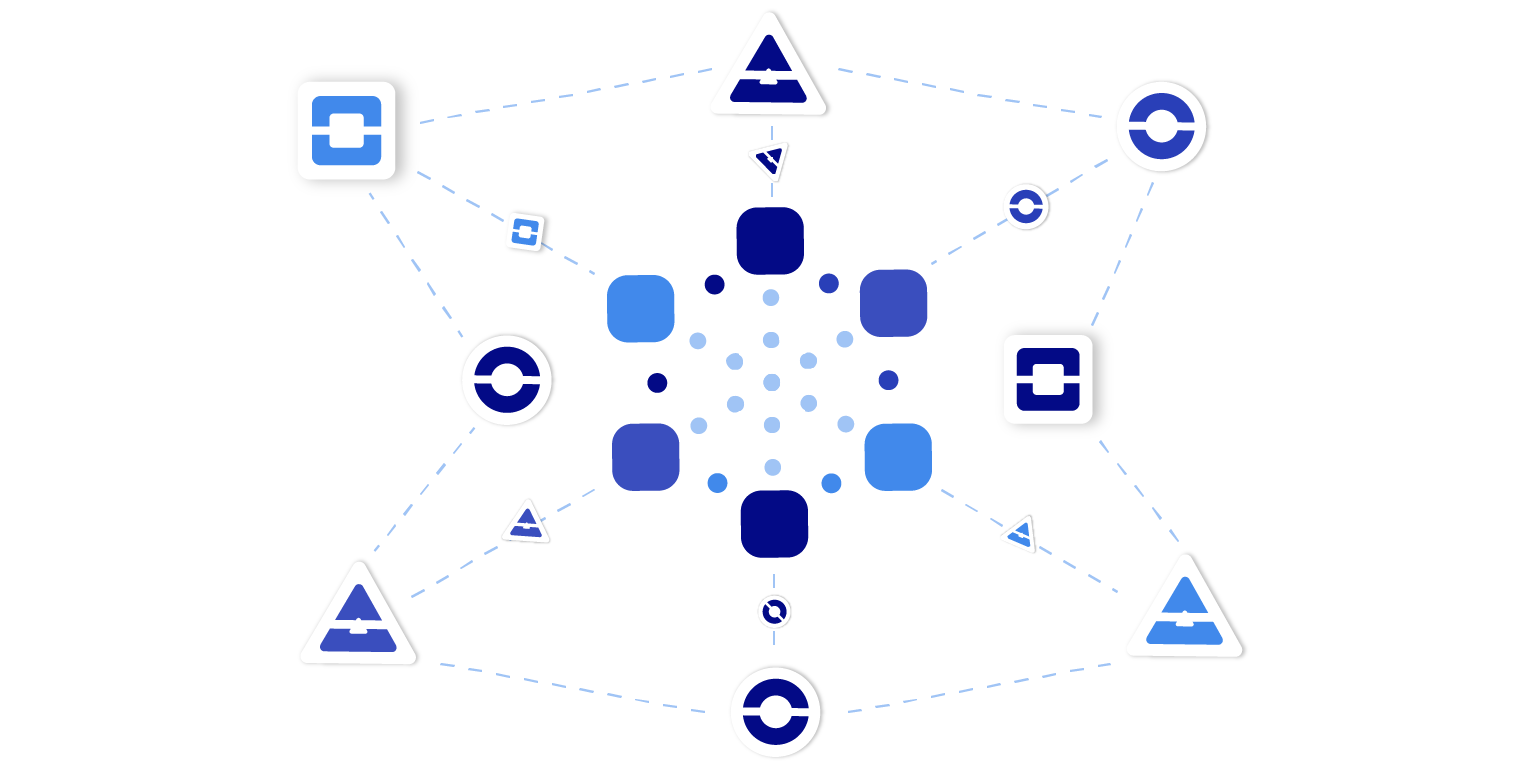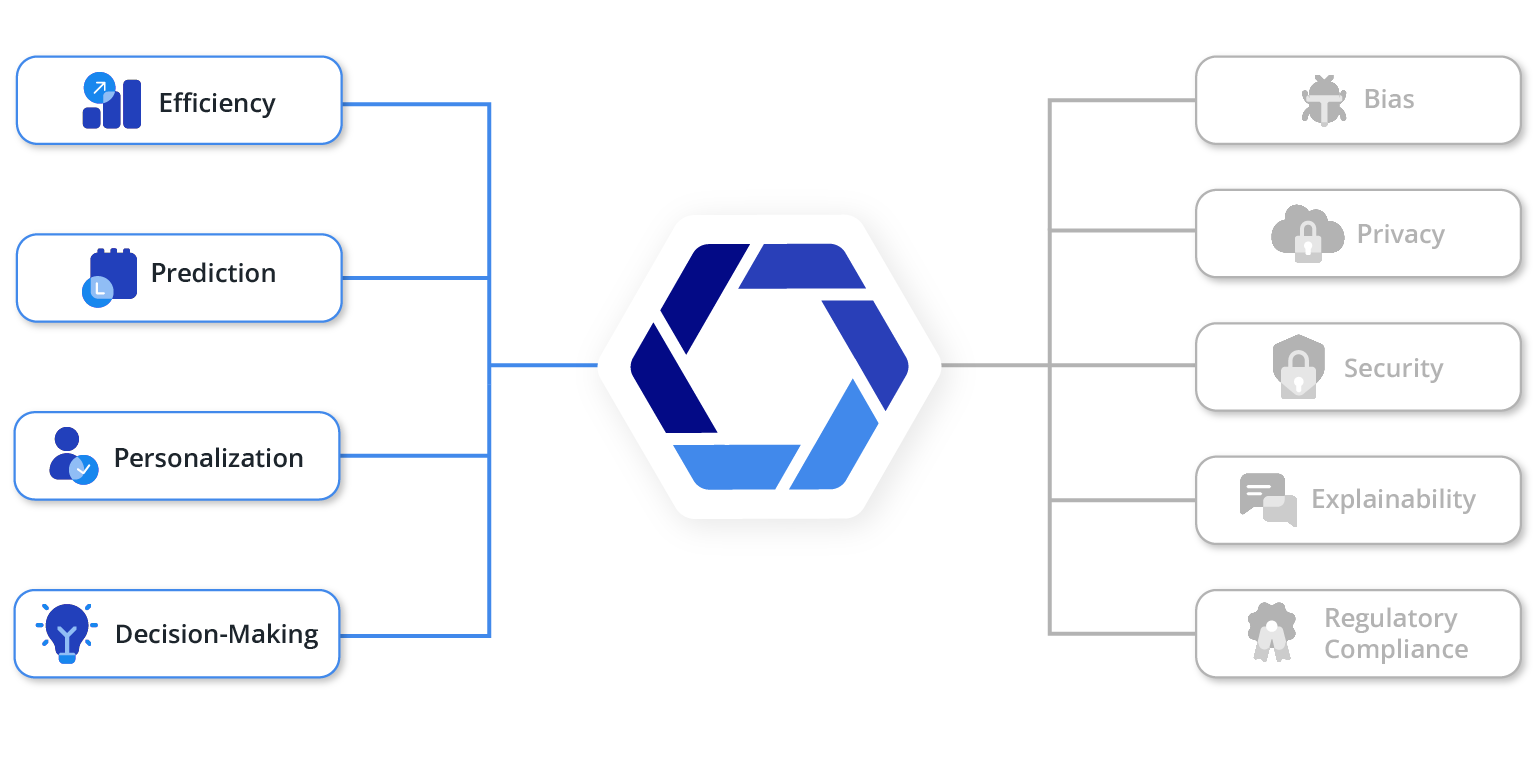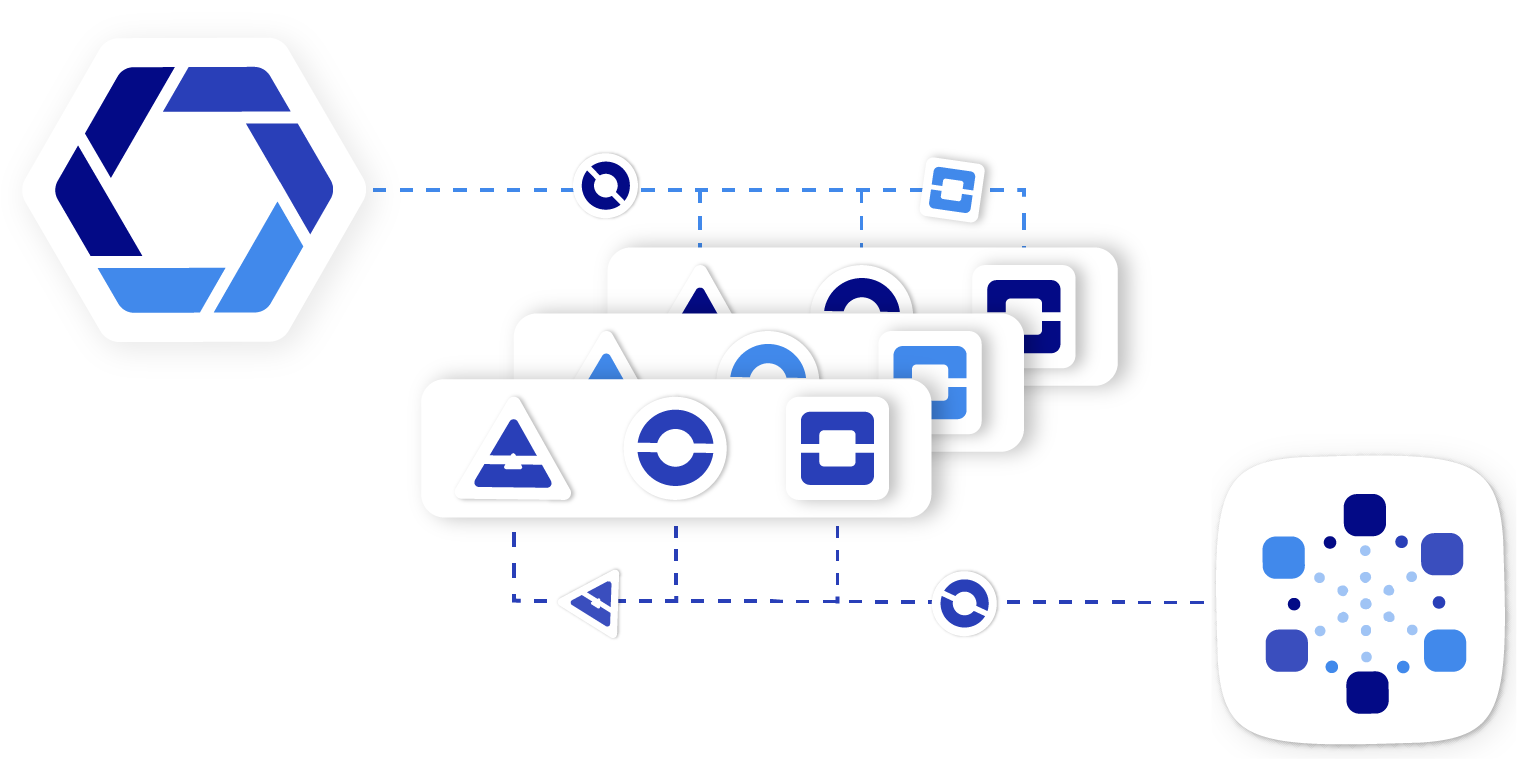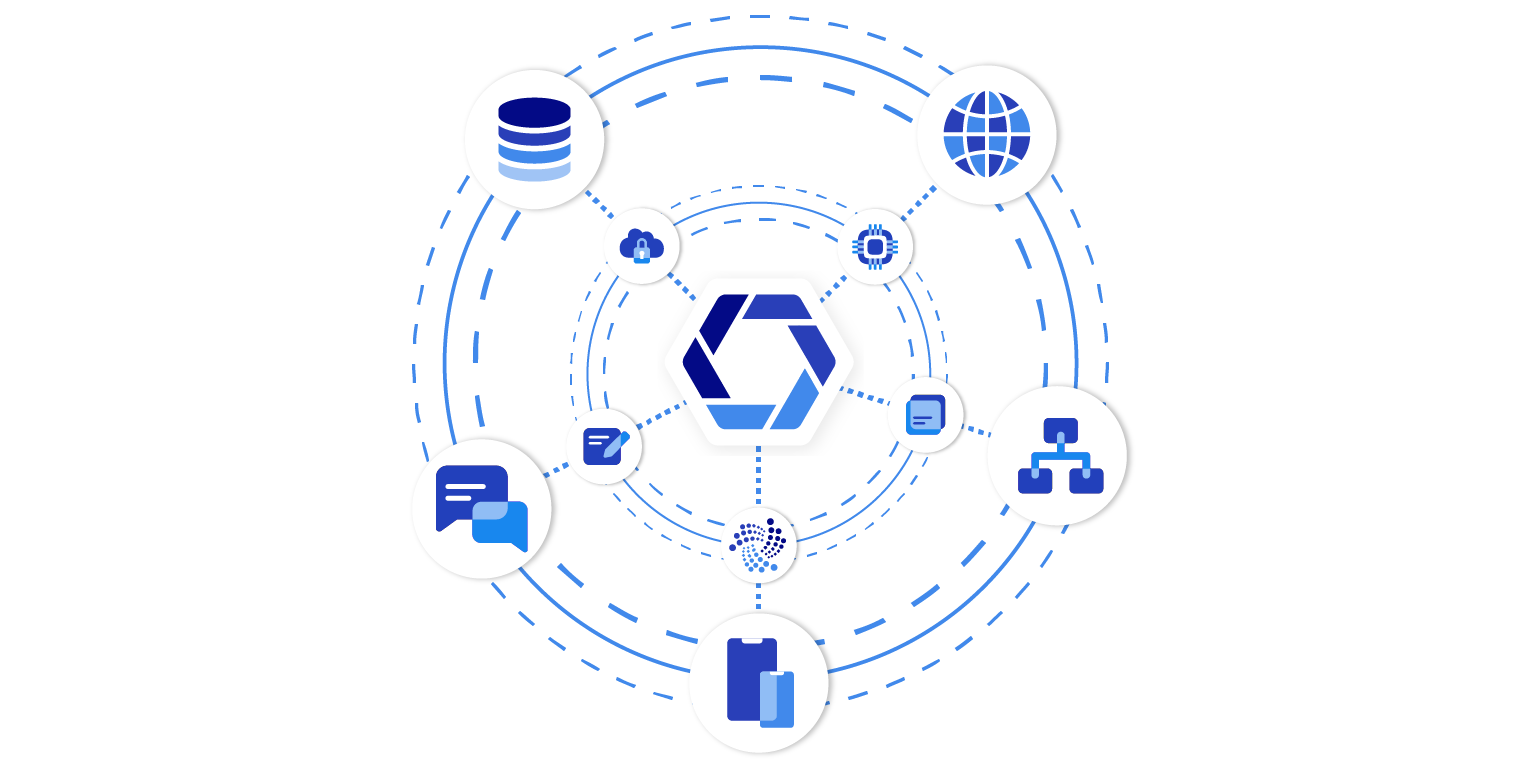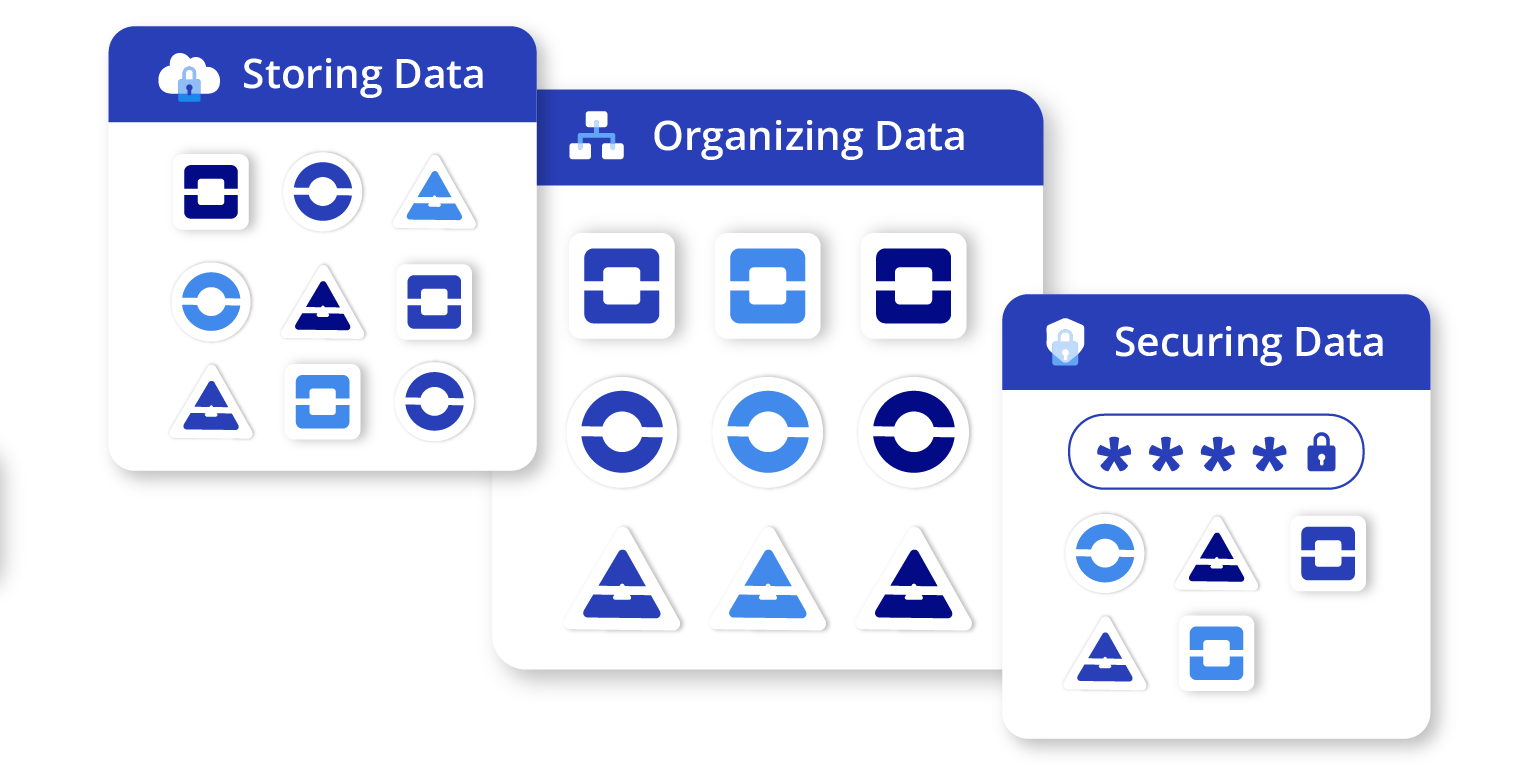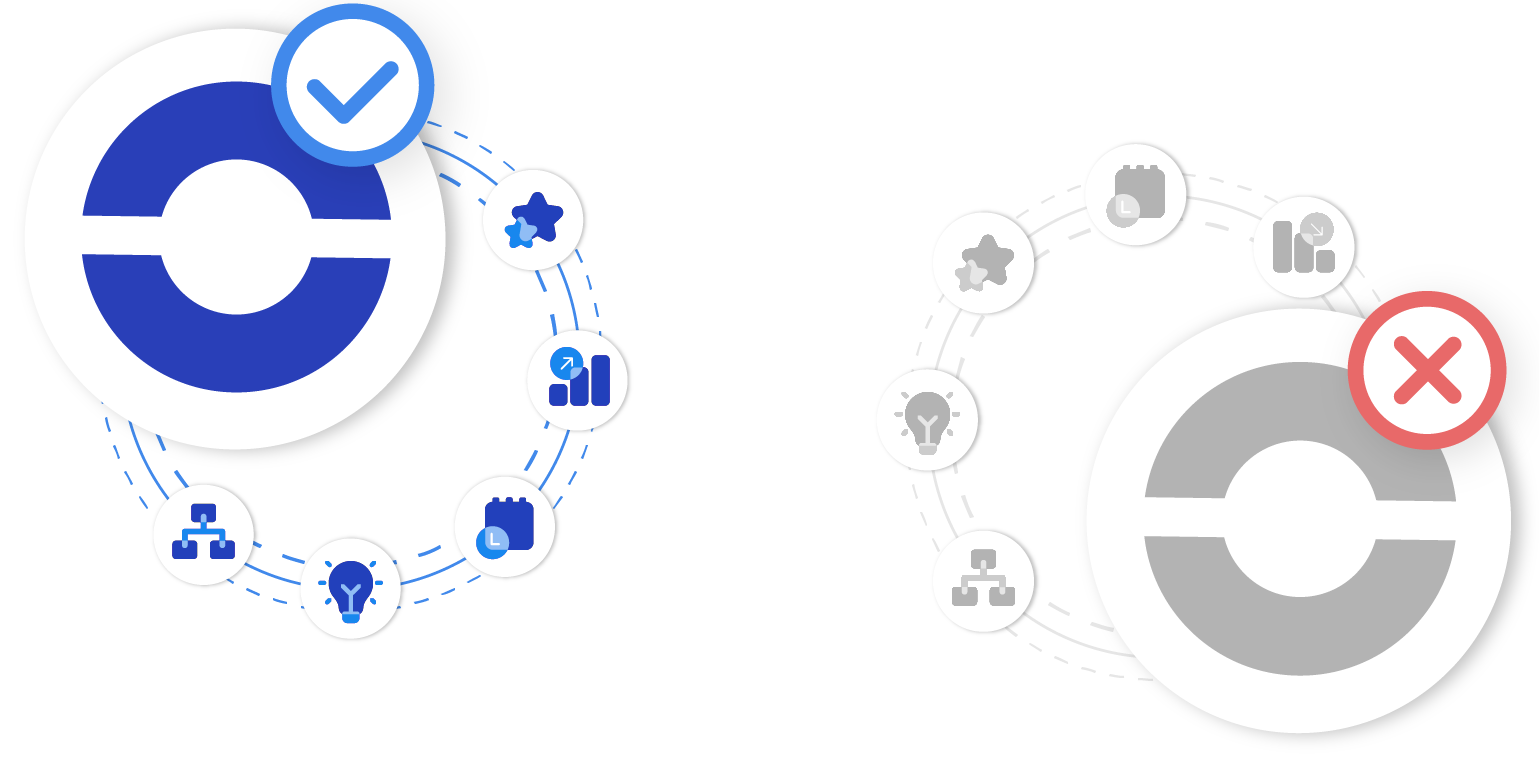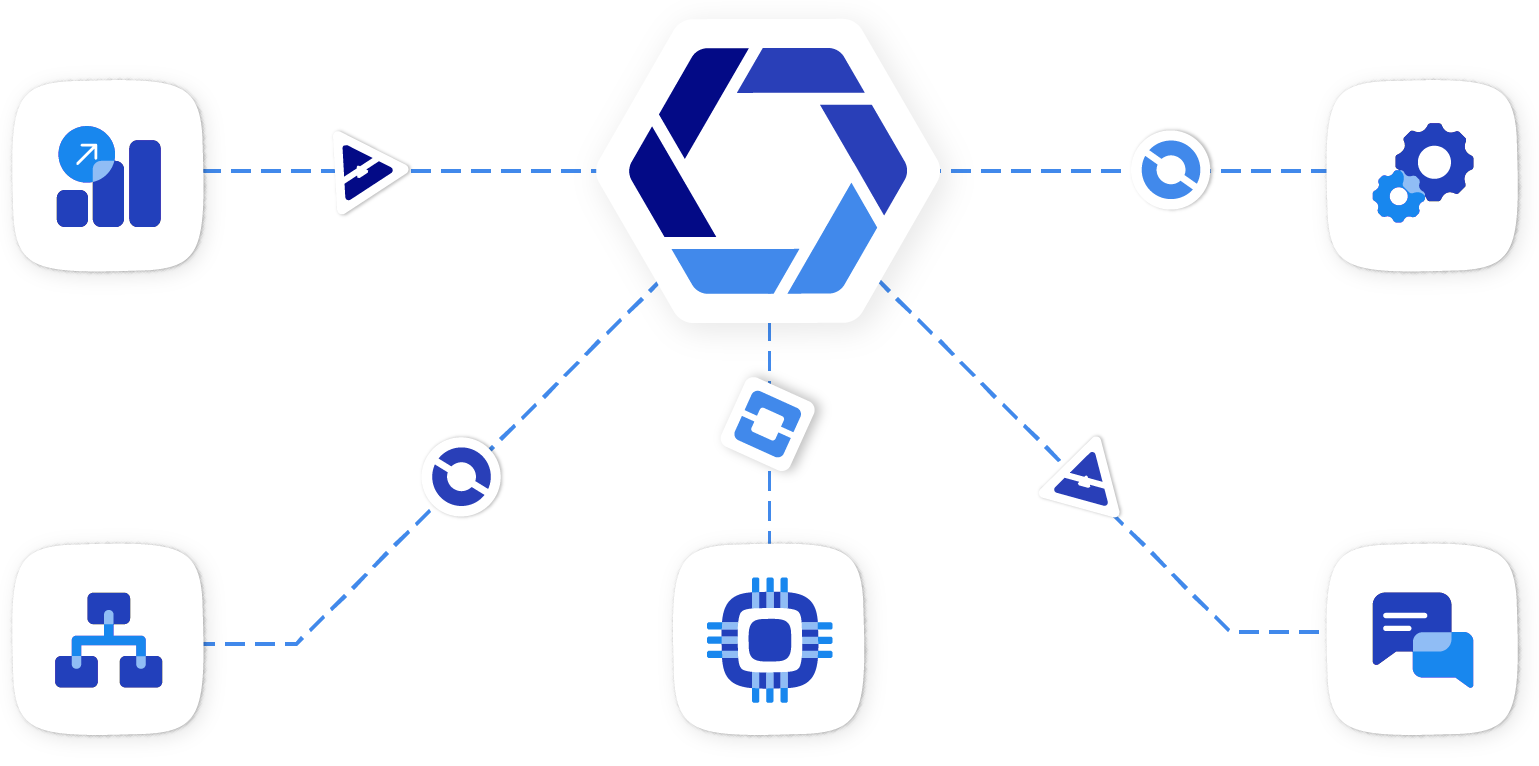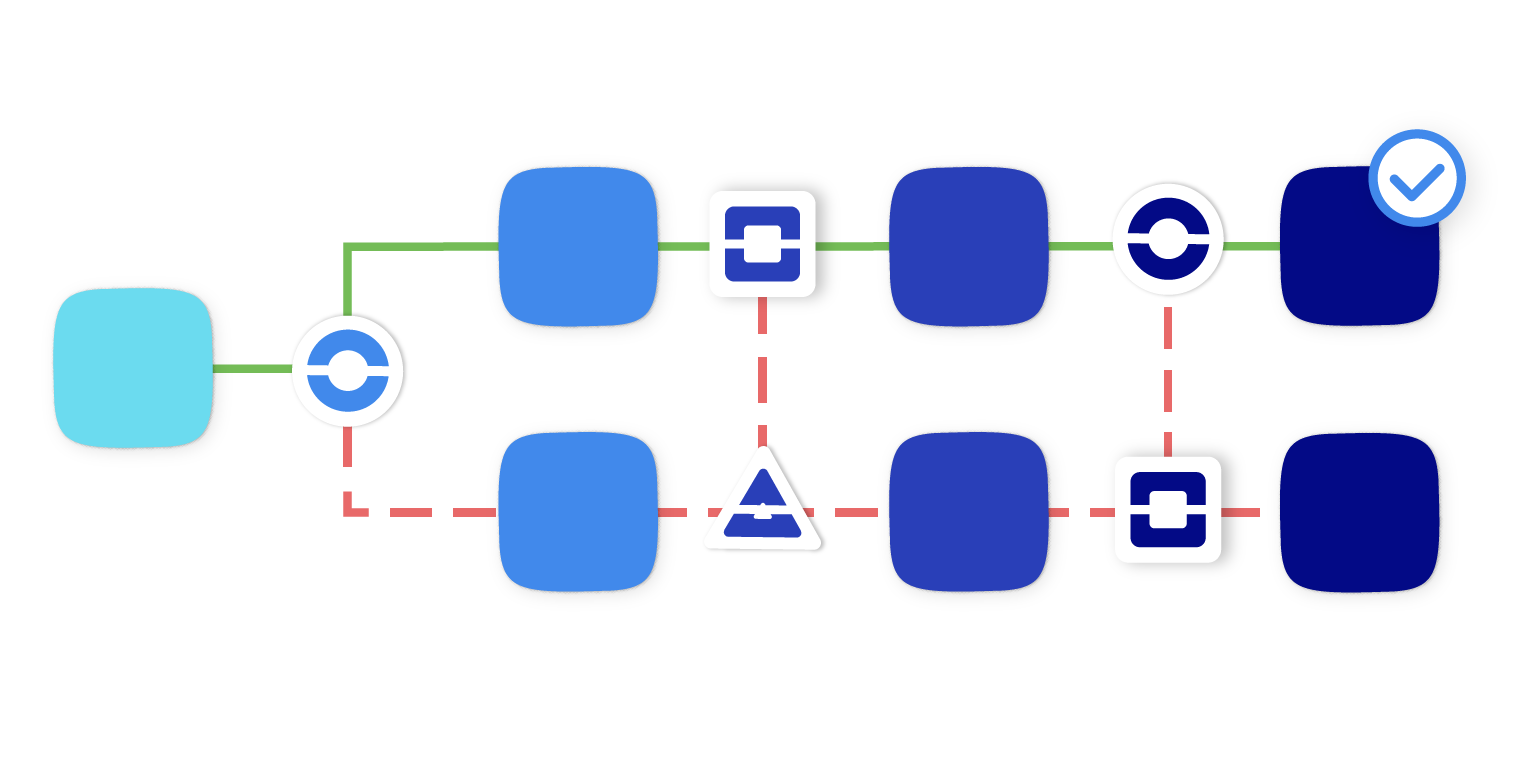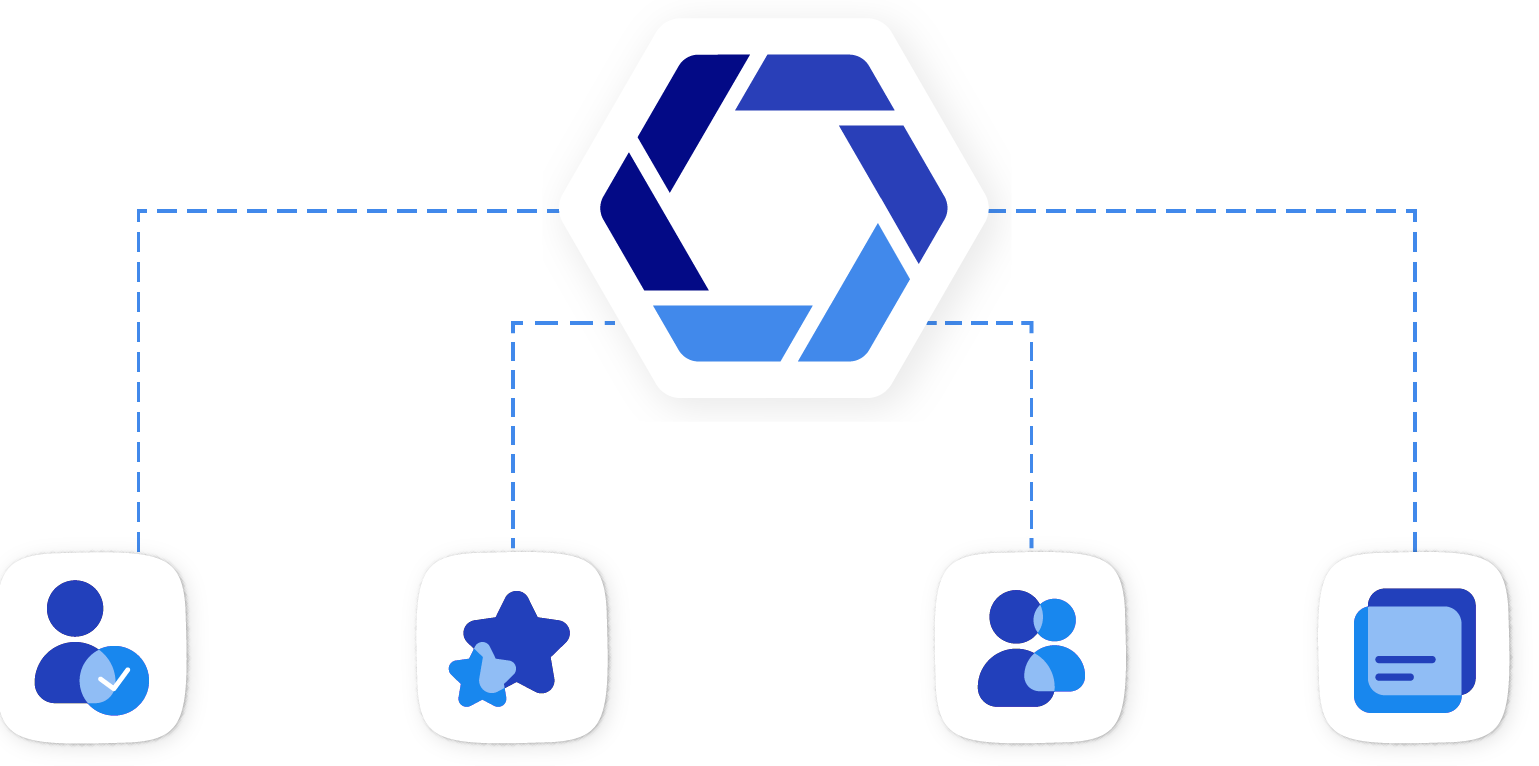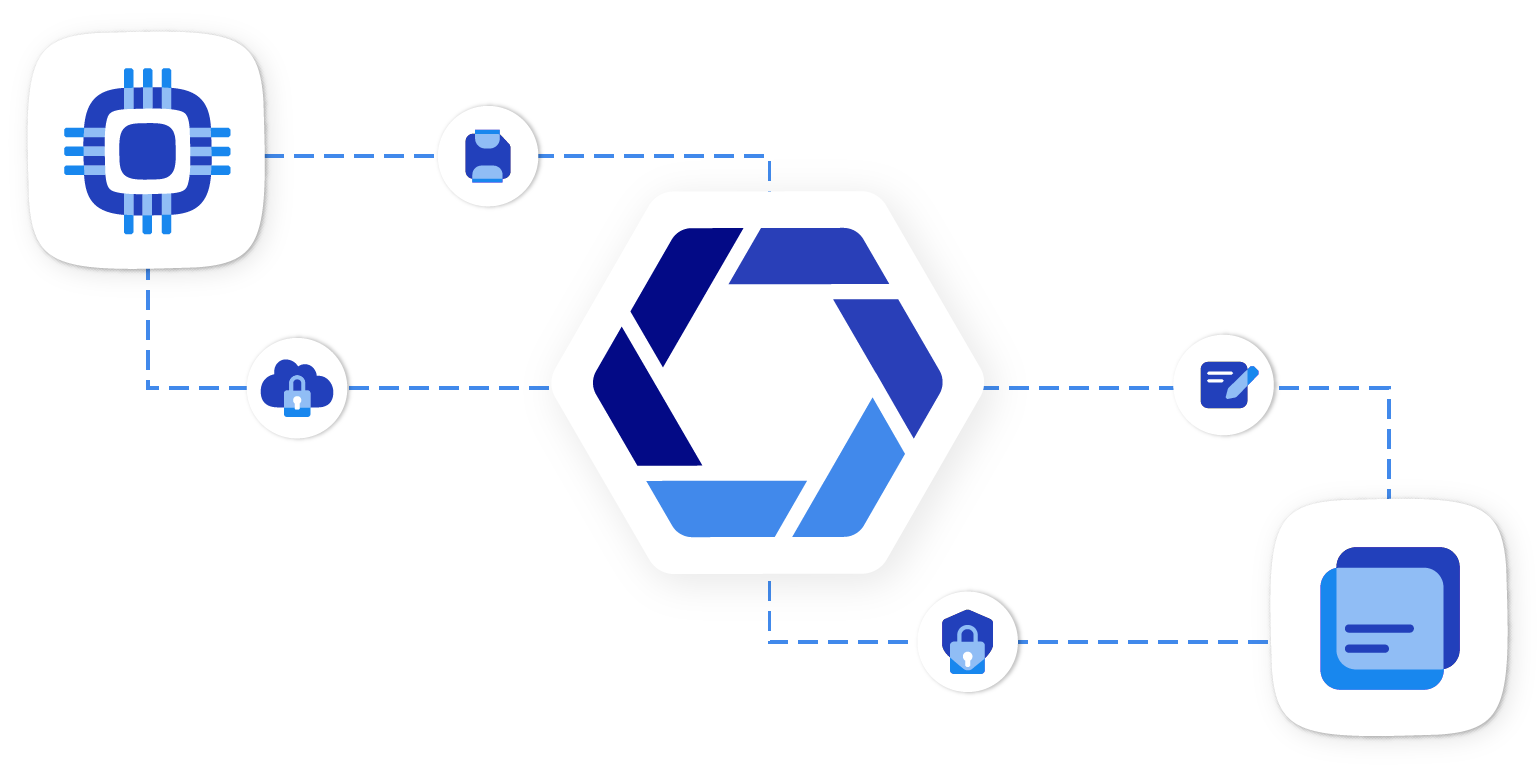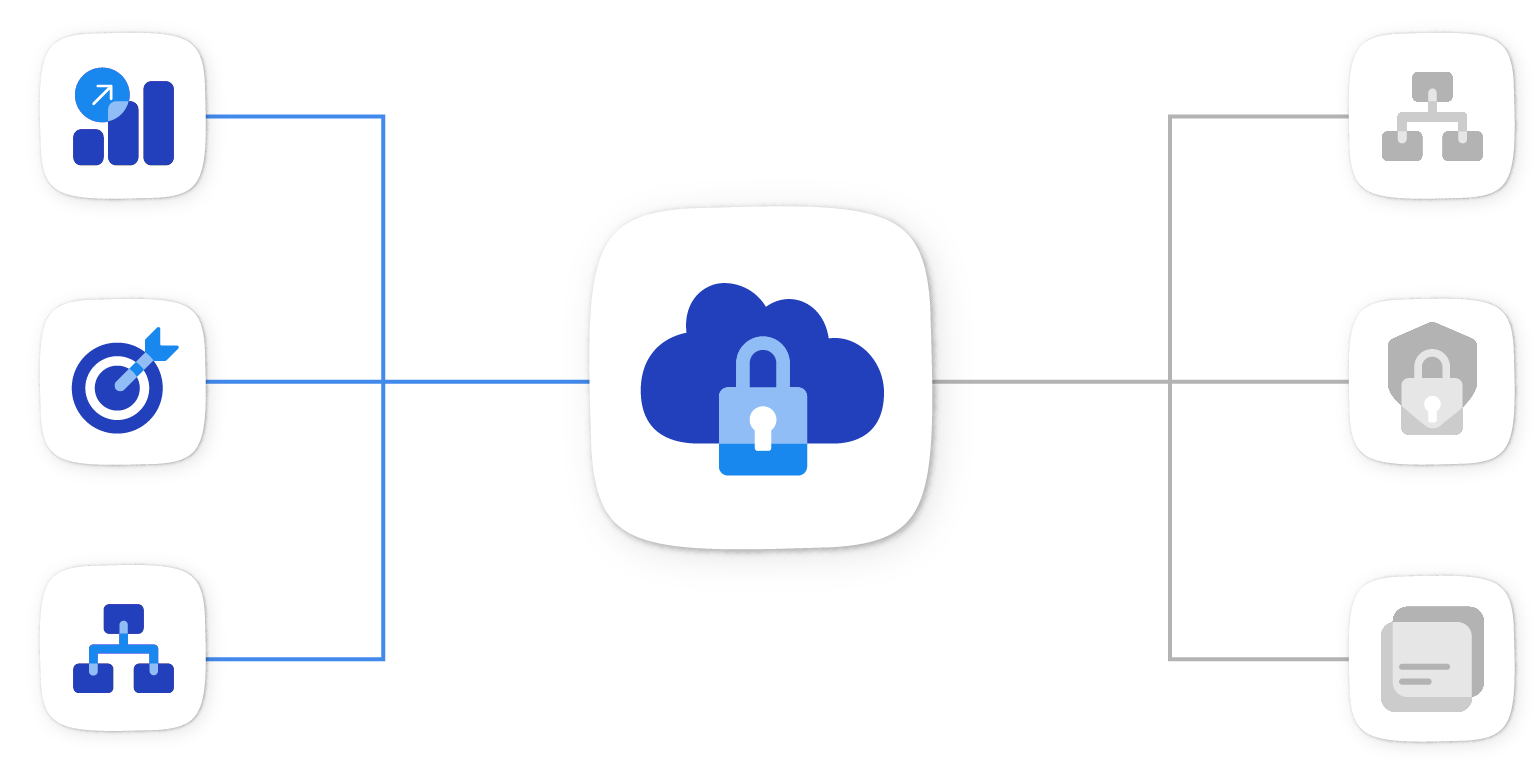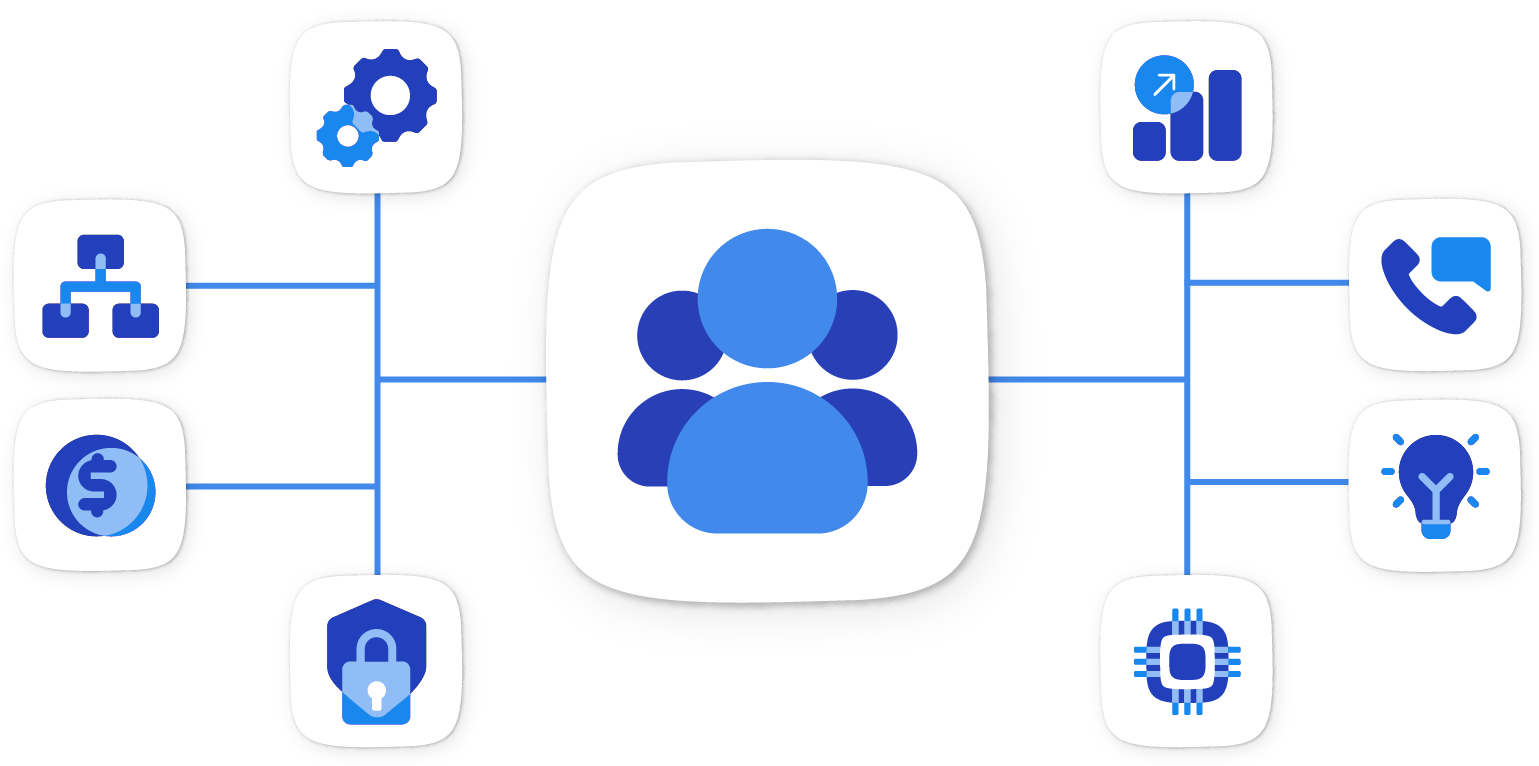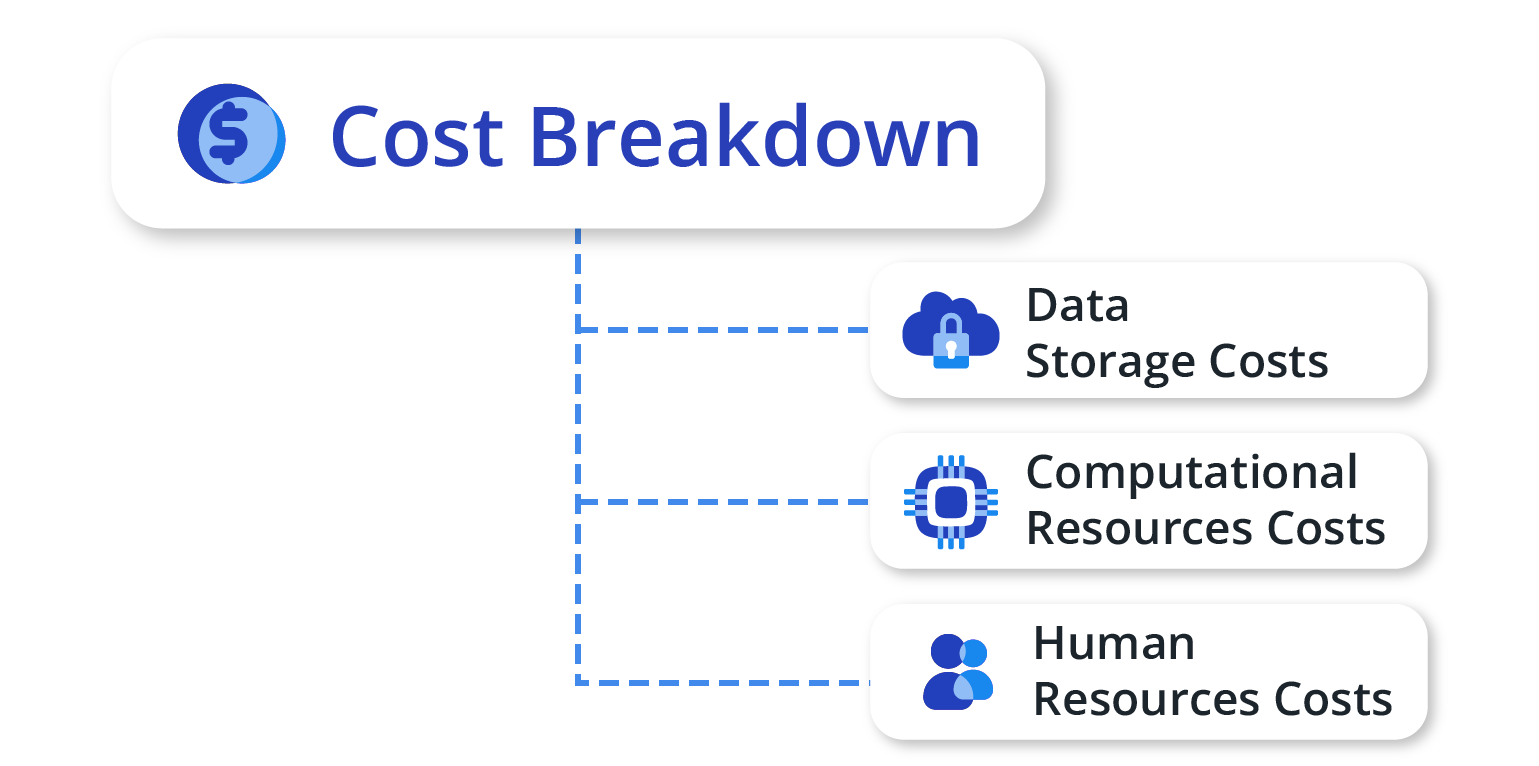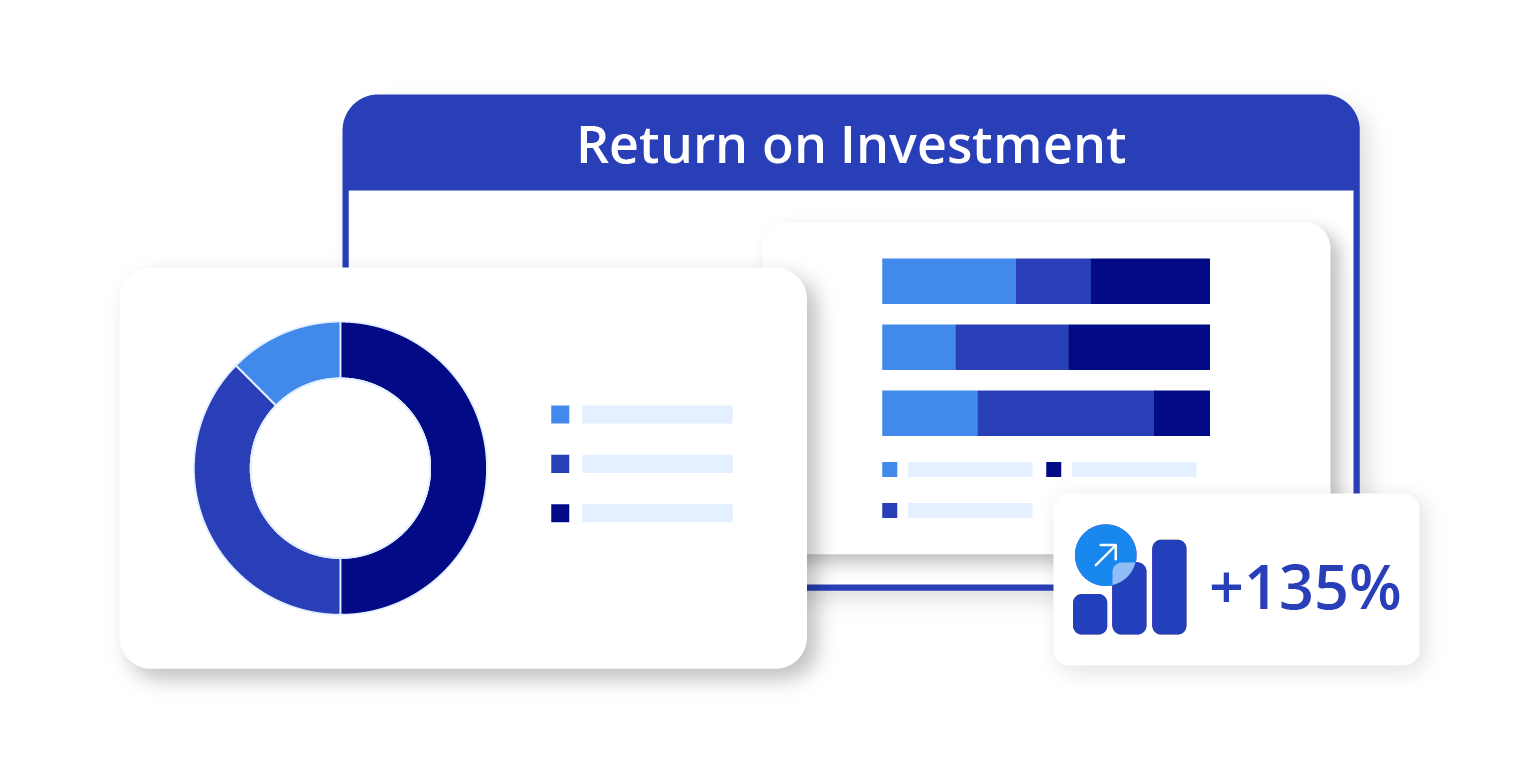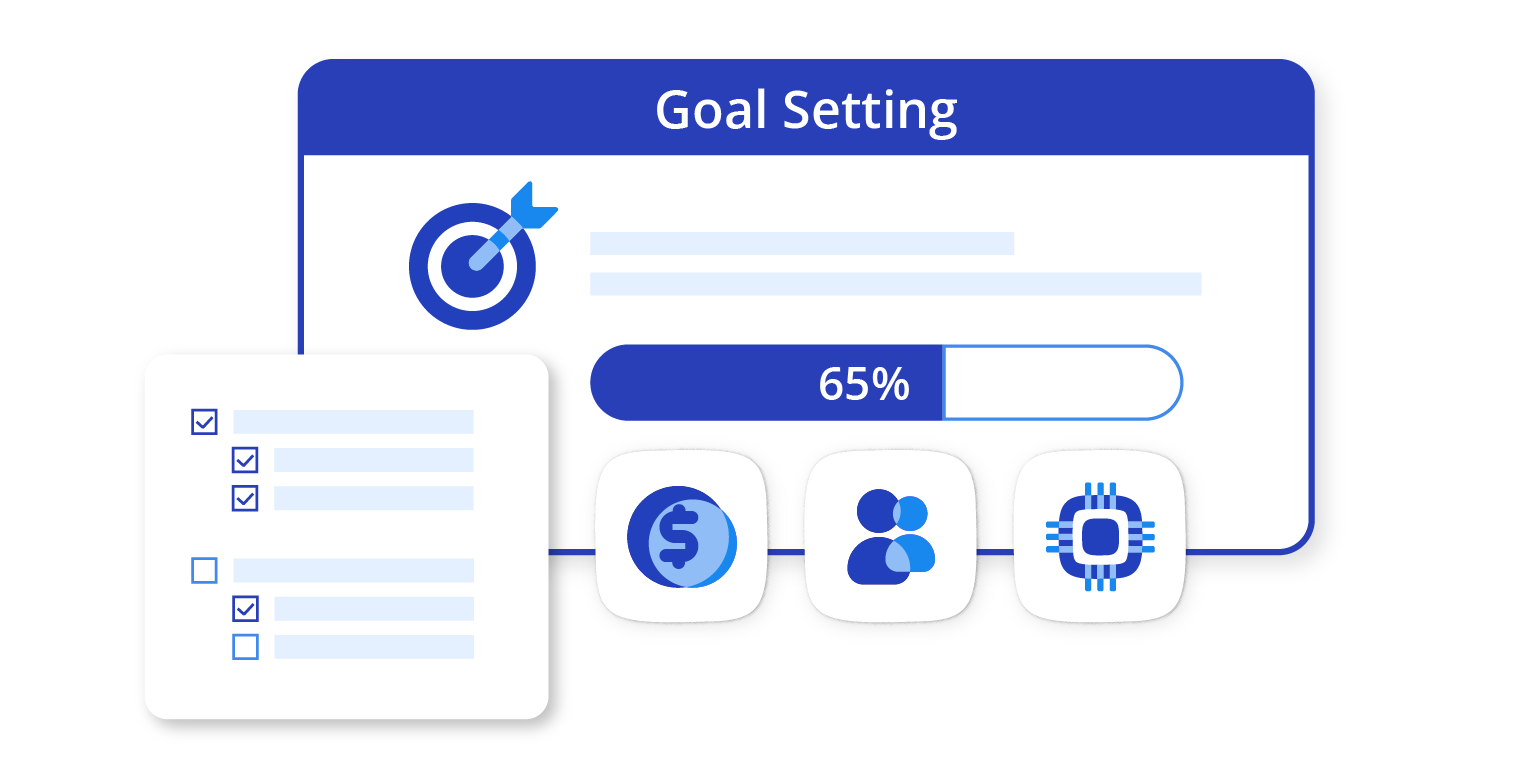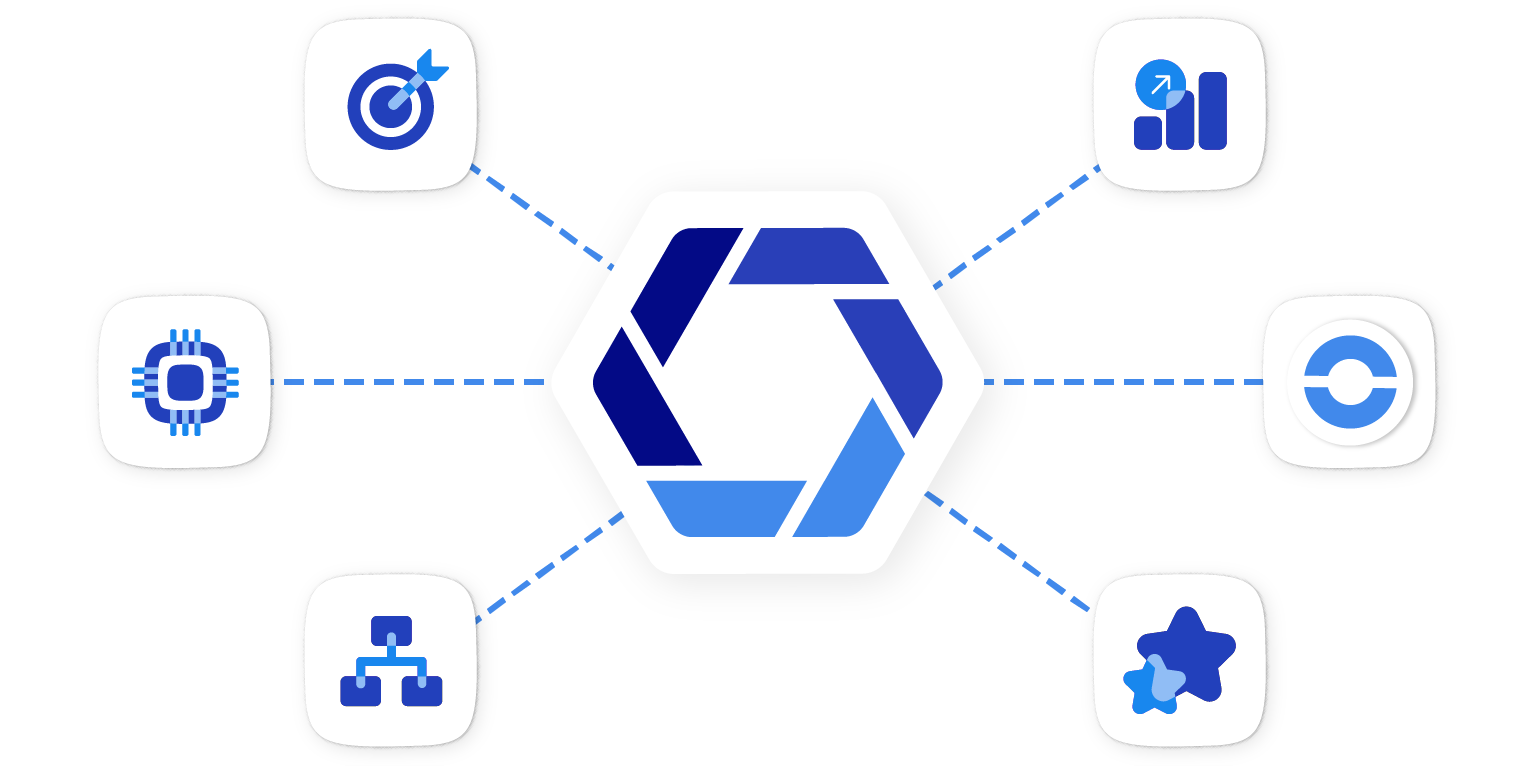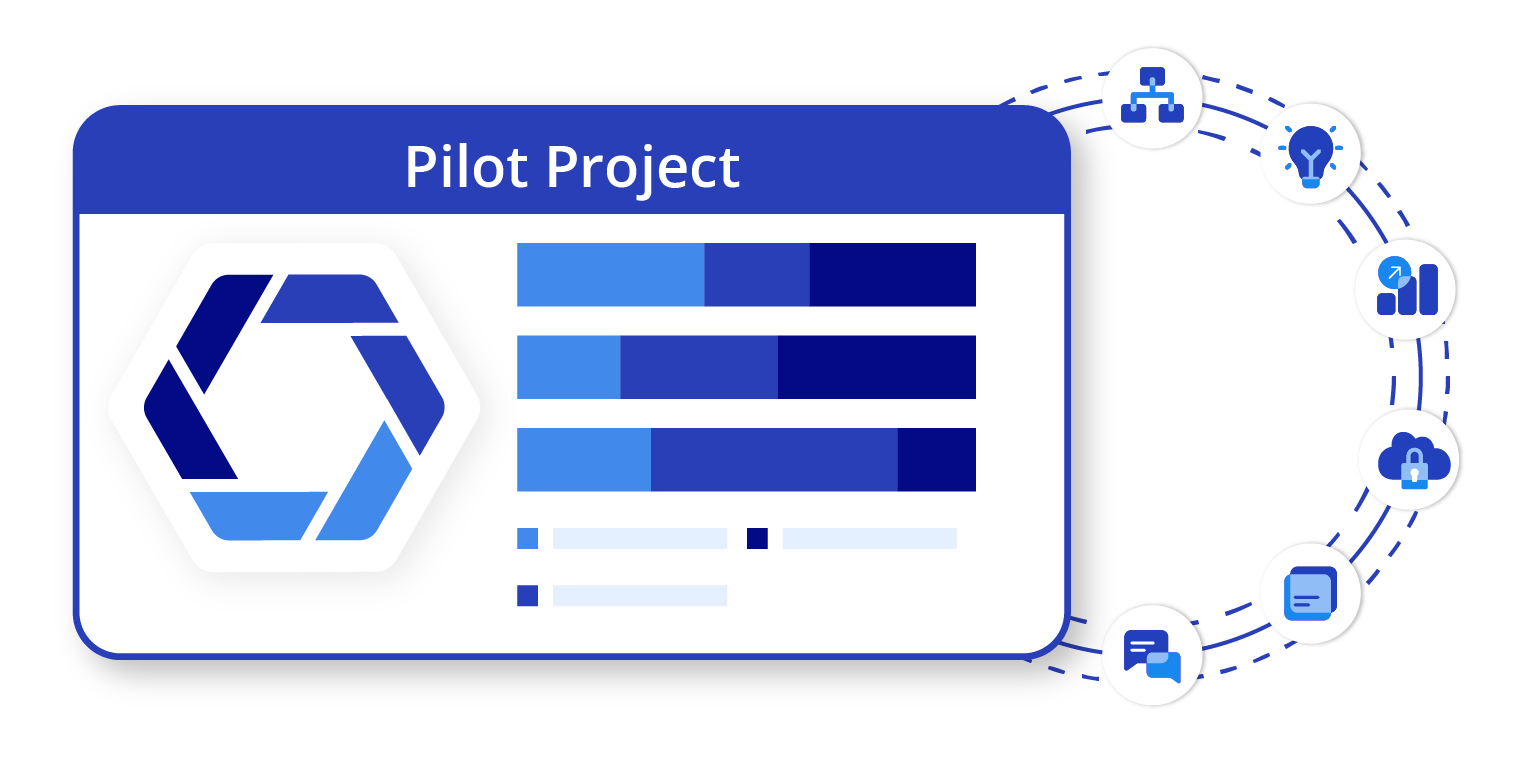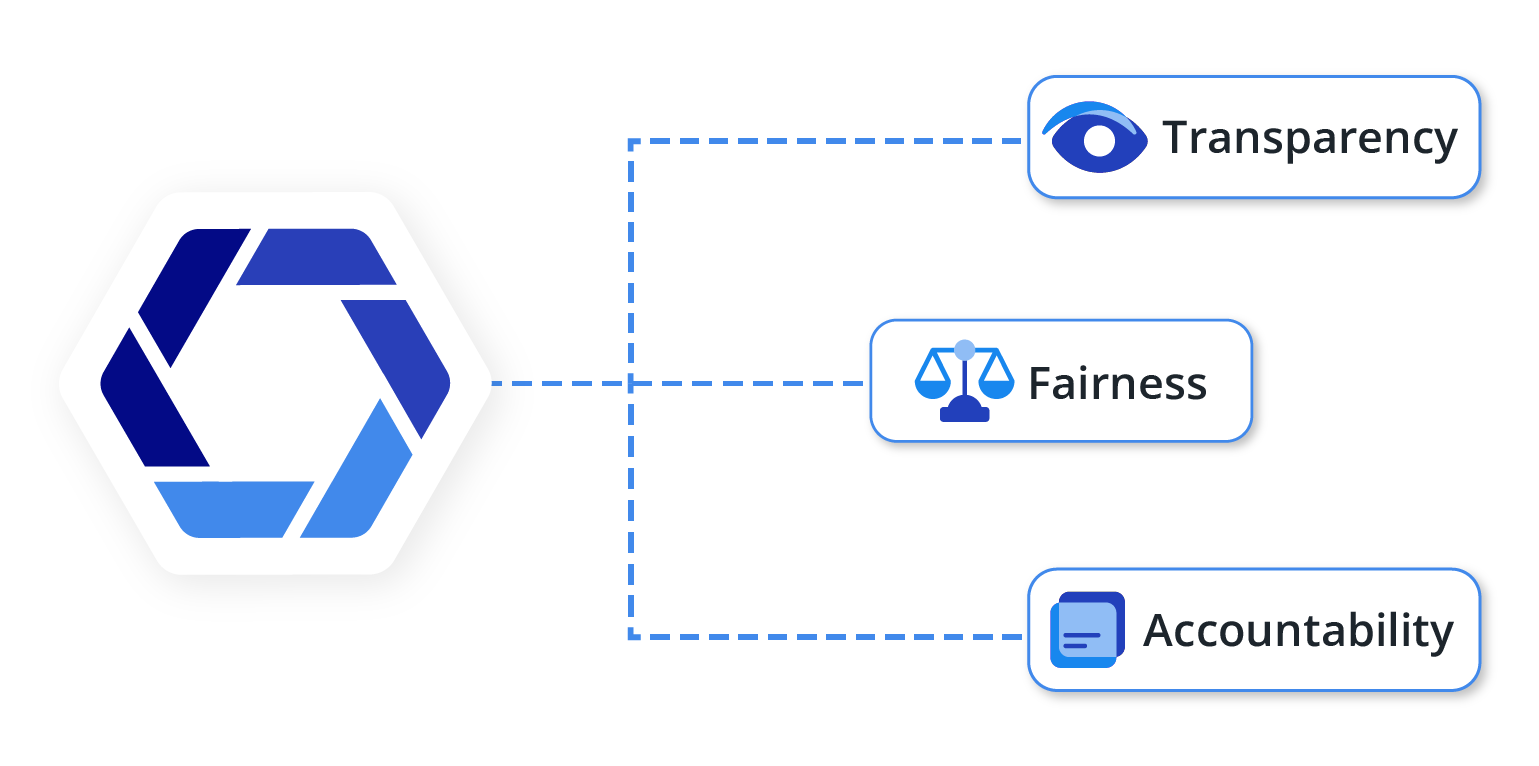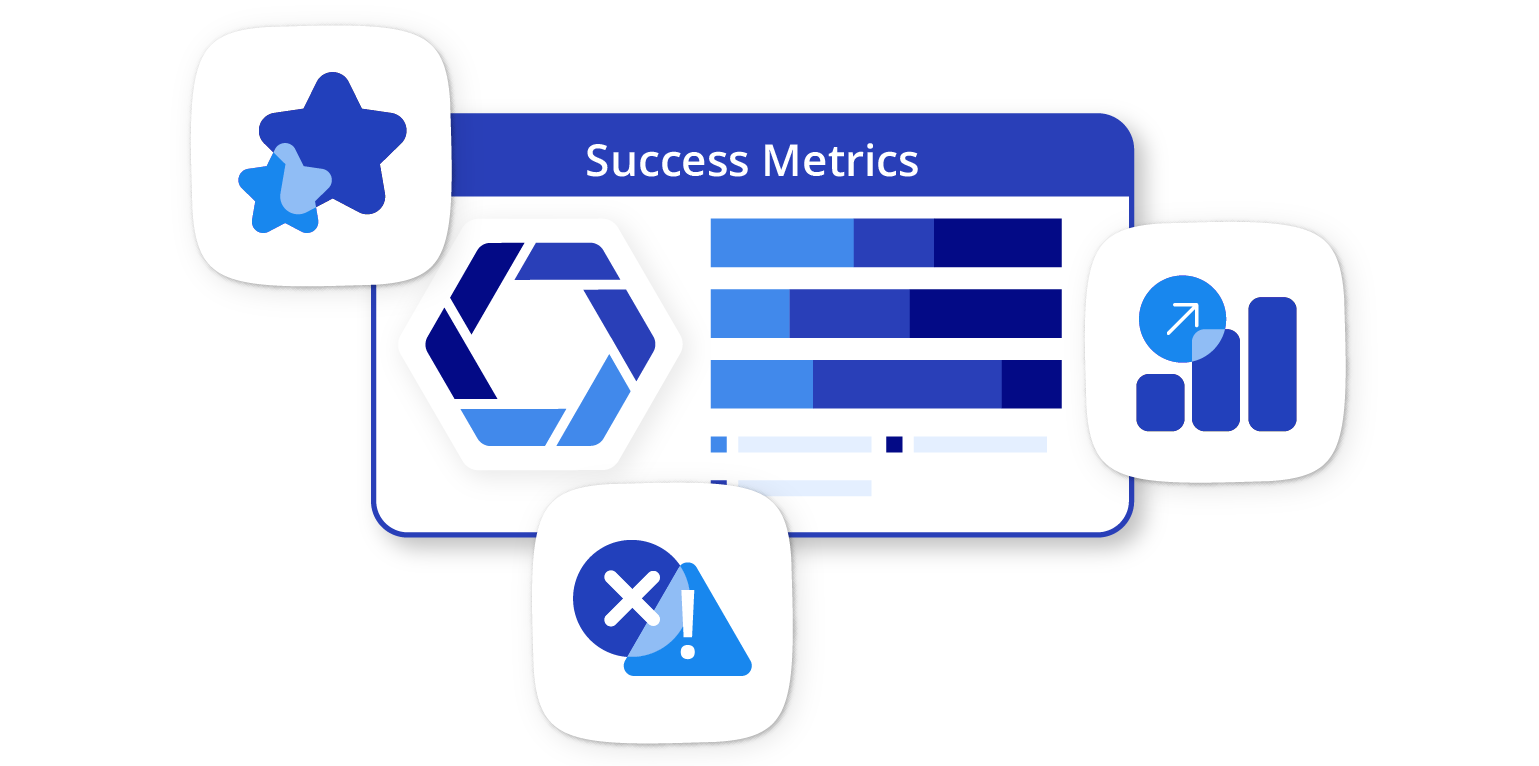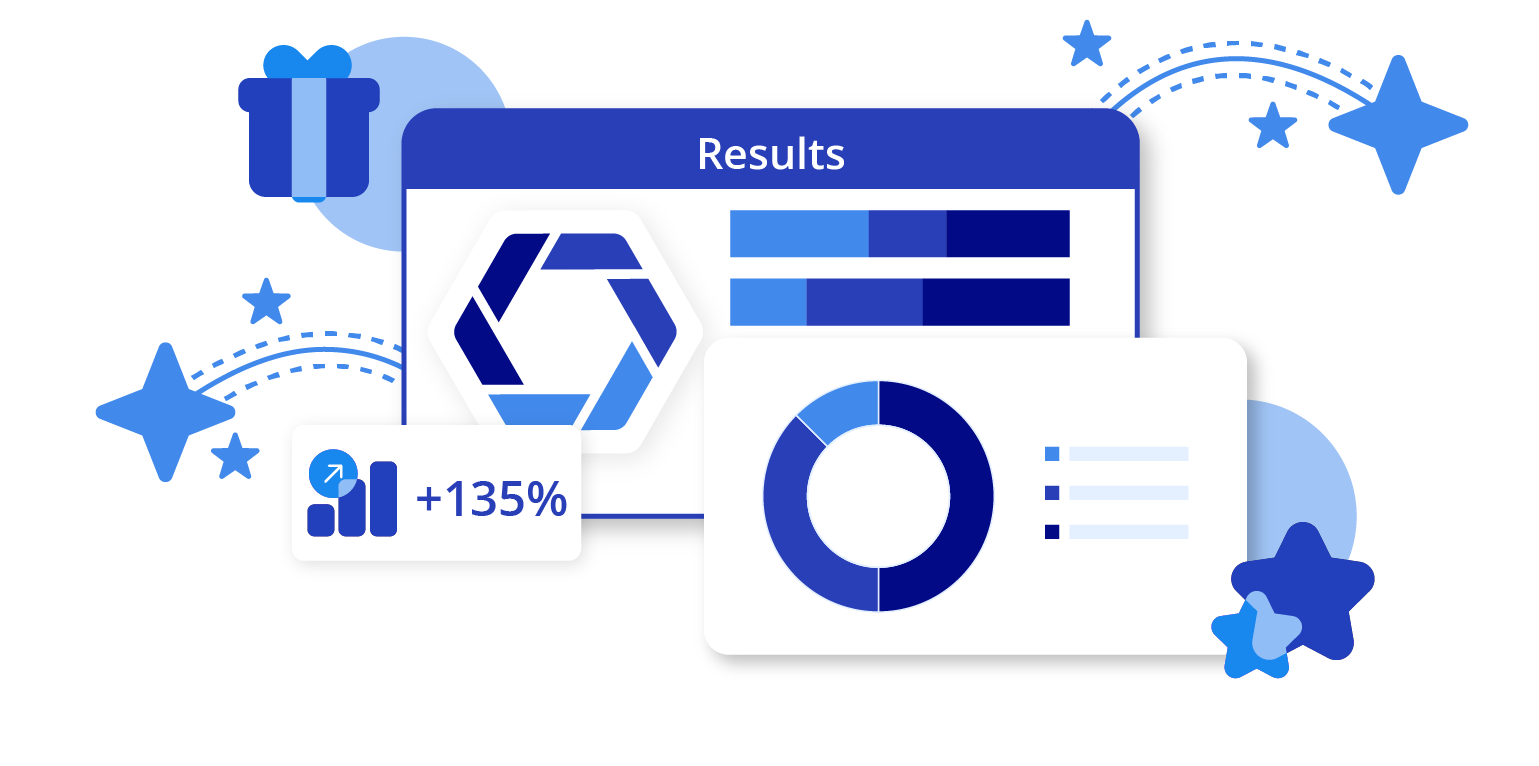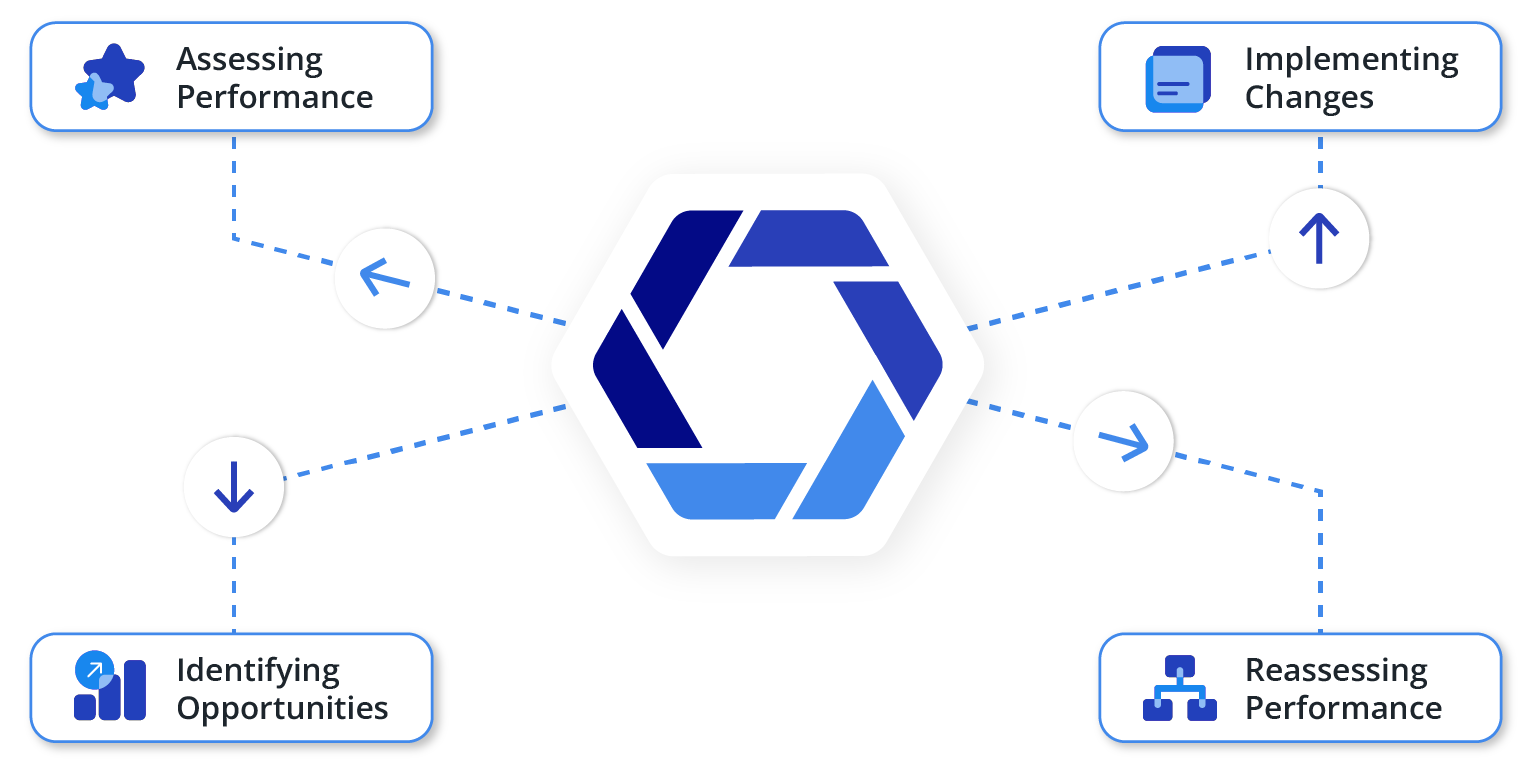Welcome to this 10-step field guide to AI for COOs. This comprehensive guide has been designed with busy, non-data-professional executives in mind like you to demystify the process of integrating AI and machine learning into your organization.
With the roadmap provided here, you’ll learn how to efficiently and economically prepare your organization for AI, from the initial stages of understanding the fundamental principles of AI and ML to successfully implementing, scaling, and evaluating these transformative technologies.
Let’s embark on this transformative journey together.
1. Introduction to AI and Machine Learning
Artificial intelligence (AI) and machine learning (ML) are reshaping the business landscape and opening up new opportunities for efficiency, growth, and innovation.
But before we delve into how to deploy these technologies within your organization, it is important to understand what they are, how they work, and why they matter.
In this section, we’ll start by defining AI and ML and exploring their origins and their different branches. We’ll go beyond the buzzwords to clarify what these terms really mean.
We’ll then discuss how these technologies operate and differentiate AI from traditional programming. We’ll also touch on the various types of ML to give you a broad understanding of these key concepts.
Next, we’ll delve into why AI and ML are so important, showcasing their benefits and potential impact on your organization. We’ll also address some common challenges and risks associated with AI and ML deployment.
Finally, we’ll wrap up with real-world success stories to show how these technologies have been successfully implemented across various industries.
By the end of this section, you will have a solid grasp of AI and ML’s fundamental concepts to prepare you for the subsequent steps in your AI and ML deployment journey.
Defining AI
As an enterprise COO, the definition of AI is something that you should be aware of already. Of course, a small refresher course on AI history wouldn’t hurt.
Artificial intelligence, commonly known as AI, is a branch of computer science that aims to create machines capable of performing tasks that usually require human intelligence. These tasks include understanding natural language, recognizing patterns, solving problems, and making decisions.
The term “artificial intelligence” was first coined by John McCarthy in 1956 at the Dartmouth Conference, which marked the birth of AI as a field of study.
A Brief History of AI
AI has evolved significantly since its inception. In the early years, AI research focused on symbolic methods and problem-solving models. This era saw the development of systems that could mimic human problem-solving skills, albeit in specific domains.
In the 1990s, machine learning came to the fore, harnessing the power of data and statistics to train machines to improve their performance over time. The advent of the internet and the explosion of digital data gave machine learning a significant boost.
More recently, we have seen the rise of deep learning, a subset of machine learning that leverages neural networks with many layers (hence “deep”) to model and understand complex patterns. Enabled by advances in computational power and the availability of large datasets, deep learning has powered many recent breakthroughs in AI.
Branches/Types of AI
AI can be categorized into several branches or types, each with distinct characteristics and applications. For this guide, we’ll focus on two significant types: generative AI and predictive AI.
Generative AI
This branch of AI involves systems that can generate content. They are based on generative models, which can generate new data instances that resemble the training data. These models can create anything, from written text to images, music, and even voice.
A well-known implementation of generative AI is generative adversarial networks (GANs), a type of neural network architecture that pits two networks against each other to generate new, synthetic instances of data.
Applications of generative AI can be seen in diverse fields, from art and design (e.g., creating new graphic designs or artworks) to healthcare (e.g., creating synthetic patient data for research).
Predictive AI
Predictive AI, as the name suggests, is used to predict future outcomes based on historical data. It involves techniques such as machine learning and statistical modeling.
ML models are trained on a dataset and learn to predict outcomes based on patterns and relationships in that data. For example, a predictive AI model could be used to forecast customer behavior, predict disease progression in healthcare, or anticipate market trends in finance.
Each type of AI has its strengths and is suited to different tasks. Generative AI excels in tasks that require creativity and the generation of new content, while predictive AI is ideal for tasks that require making forecasts or predictions about future events. Both are crucial in transforming various aspects of an enterprise and driving innovation.
How AI Works
The exact workings of AI depend largely on the type of AI and the techniques used. However, at a high level, AI works by learning from data. An AI system is fed a large amount of data and uses algorithms to identify patterns in this data. Over time, the system improves its performance based on feedback or additional data.
AI vs. Traditional Programming
The main difference between AI and traditional programming lies in their approaches to problem-solving:
Traditional Programming
Here, a programmer explicitly tells the computer what to do. They define the rules and write the code telling the computer how to process input data to generate the desired output.
AI
In contrast, AI uses data and algorithms to learn how to reach a desired outcome. Instead of being explicitly programmed, an AI system learns from experience (i.e., data) and adjusts its algorithms based on what it learns to improve performance over time.
Understanding AI and its potential can empower your organization to leverage this technology effectively, creating efficiencies, uncovering insights, and driving innovation.
Defining ML
Machine learning is a subset of AI that allows systems to automatically learn and improve from experience without being explicitly programmed. In other words, ML systems can learn from data, identify patterns, and make decisions with minimal human intervention.
Types of Machine Learning
There are primarily three types of machine learning:
Supervised Learning
This is the most common type, where an algorithm learns from labeled data. During training, the model is provided with input–output pairs, and the goal is to learn a mapping from inputs to outputs. Once trained, the model can apply this mapping to new, unseen data.
Examples include regression and classification problems, such as predicting house prices or identifying emails as spam or not spam.
Unsupervised Learning
Here, the algorithm learns from unlabeled data and discovers patterns or structures from the input data. The goal is to understand the underlying structure of the data or reduce its dimensionality. Common examples of unsupervised learning include clustering (grouping similar items) and association rules.
Reinforcement Learning
This type of ML involves an agent that interacts with its environment by producing actions and receiving rewards or penalties in return. The goal is to learn a policy that maximizes the sum of rewards over time. Reinforcement learning is often used in robotics, gaming, and navigation.
How Machine Learning Works
Machine learning operates through a series of stages to successfully learn from data. It begins with data collection, where relevant data is gathered and prepared for training the model. This data forms the basis from which the model will learn.
After collecting the data, the next step involves selecting a suitable ML algorithm that aligns with the problem you are trying to solve. Once a model is chosen, the training process begins.
During training, the collected data is fed into the model, allowing it to learn and identify patterns. Then the model’s performance is evaluated using unseen data to verify if it has learned effectively. This process can reveal areas of improvement, leading to the final stage of machine learning tuning.
In this phase, adjustments are made to the model to enhance its performance based on the insights obtained from the evaluation stage. This iterative process of training, evaluation, and tuning is central to creating a successful ML model.
Popular ML Algorithms
Here are a few popular machine-learning algorithms:
- Linear Regression: A simple but widely used algorithm for predicting a continuous output variable based on one or more input features
- Logistic Regression: Similar to linear regression but used for classification problems where the output is binary (e.g., yes/no, true/false)
- Decision Trees: A type of model that makes decisions based on a tree-like model of decisions. Useful for both regression and classification problems
- Support Vector Machines (SVM): A technique that classifies data by finding the best boundary that separates different categories of data points
- Neural Networks: A framework for many ML algorithms to work together and process complex data inputs
- K-Means Clustering: An unsupervised learning algorithm for grouping data into clusters based on their similarity
Understanding machine learning is the key to unlocking the vast potential of AI. By identifying patterns and learning from data, ML can help organizations make better decisions, predict future trends, and automate tasks.
The Importance and Benefits of AI/ML
As we delve into a more data-driven era, the importance and benefits of artificial intelligence and machine learning cannot be overstated. When appropriately applied, these technologies can profoundly impact efficiency, prediction, personalization, and decision-making within an organization.
Efficiency
AI and ML can dramatically improve organizational efficiency by automating routine tasks. By assuming responsibility for time-consuming, repetitive work, they free up employees to focus on higher-value tasks that require human judgment and creativity. This increases productivity and can lead to significant cost savings.
Moreover, AI and ML can often perform these tasks more accurately and consistently than humans, reducing errors and improving quality.
Prediction
One of the greatest strengths of ML is its predictive capabilities. By learning from historical data, ML algorithms can identify patterns and trends not easily discernible to humans.
They can be used to predict future outcomes in various domains, from sales forecasts and customer churn to equipment failures and disease outbreaks. These predictive insights can enable proactive decision-making, which helps organizations mitigate risks and seize opportunities.
Personalization
AI/ML has revolutionized the field of personalization. Today, businesses can use these technologies to understand their customers at an individual level and tailor their offerings accordingly.
This can be seen in the personalized recommendations offered by streaming services, the targeted advertising on social media, and the customized shopping experiences on e-commerce sites. Personalization can enhance customer satisfaction, drive user engagement, and boost sales.
Decision-Making
Perhaps most importantly, AI and ML can augment human decision-making. These technologies can provide decision-makers with timely, data-driven insights by processing and interpreting vast amounts of data quickly.
This allows organizations to make more informed decisions, whether identifying the best candidate for a job, selecting the optimal route for a delivery, or determining the ideal price for a product. Moreover, AI/ML can help identify biases in decision-making and promote more fair and objective outcomes.
Risks and Challenges of Using AI
While AI and ML can deliver substantial benefits, they also have inherent risks and challenges that must be carefully managed. These include bias, privacy, security, explainability, and regulatory compliance.
Bias
AI and ML systems learn from data. If the data they learn from is biased, the decisions they make can be biased too. This can lead to unfair outcomes that disadvantage certain groups.
For instance, a hiring algorithm trained on data from a company that has historically hired men over women might undervalue female candidates. To mitigate this risk, it is crucial to use diverse and representative data for training and regularly test and adjust algorithms for bias.
Privacy
AI and ML often rely on vast amounts of personal data, which raises privacy concerns. How is the data collected? Who has access to it? How is it used and stored?
These are all questions that organizations using AI/ML must be prepared to answer. They must ensure they have robust data governance policies and practices and comply with all relevant privacy laws and regulations.
Security
AI systems can be targets for malicious actors. These actors might try to manipulate the system’s behavior (an attack known as adversarial manipulation), steal the data the system is using, or gain access to the system’s underlying infrastructure.
Therefore, organizations must ensure they have strong security measures, including encryption, access controls, and intrusion detection systems.
Explainability
AI and ML systems, particularly those using complex deep learning models, can be notoriously difficult to interpret. They are often seen as “black boxes” that make decisions without explaining why.
This lack of transparency can make it difficult for humans to trust and effectively manage AI systems. It can also make it challenging to identify and correct issues like bias. Therefore, there is growing interest in explainable AI (XAI)—AI systems that can make their reasoning transparent.
Regulatory Compliance
As AI becomes more pervasive, it is attracting more attention from regulators. Some jurisdictions already have laws and regulations that pertain to AI, particularly around privacy and bias.
Organizations must keep abreast of this evolving legal landscape and ensure their use of AI complies with all relevant rules. This might involve working with legal experts and investing in compliance tools and processes.
Real-World AI/ML Success Stories
Artificial intelligence and machine learning have found applications across a wide variety of industries, revolutionizing traditional practices and delivering notable success. Here are a few examples that demonstrate the potential of these technologies:
Healthcare: Google’s DeepMind
DeepMind, owned by Google, developed an AI system for diagnosing eye diseases. The system uses deep learning to analyze 3D scans of patients’ eyes and detect more than 50 eye conditions with 94% accuracy. This tool helps doctors make quicker and more accurate diagnoses, enhancing patient outcomes.
Retail: Amazon
Amazon has been a trailblazer in AI/ML applications in retail. It uses AI for product recommendations, fraud detection, warehouse automation, and even predicting what products will be popular in the future. Its recommendation engine, powered by ML, personalizes the shopping experience for each customer, driving sales and improving customer satisfaction.
Finance: American Express
American Express uses ML to detect and prevent credit card fraud. The company processes billions of transactions, and ML algorithms help identify patterns and flag potential fraudulent activities. This AI-driven approach has significantly reduced fraud losses and improved customer trust.
Manufacturing: General Electric (GE)
GE uses AI and ML for predictive maintenance in its manufacturing facilities. Sensors placed on equipment feed data to ML models that predict when a machine is likely to fail. This allows the company to perform maintenance before a failure occurs, reducing downtime and saving money.
Transportation: Uber
Uber uses AI for various purposes, from estimating arrival times to setting prices and matching drivers with riders. One notable use of AI is in its development of self-driving cars. Its AI algorithms process data from sensors on the vehicle to navigate roads, avoid obstacles, and obey traffic laws.
Agriculture: Blue River Technology
Blue River Technology, acquired by John Deere, developed a machine called “See & Spray” that uses computer vision and ML to recognize and spray weeds on cotton plants. This precision farming significantly reduces the chemicals used, saving costs and reducing environmental impact.
These examples illustrate the potential of AI and ML to drive efficiency, improve decision-making, enhance customer experiences, and even create new business models. They are a testament to the transformative power of AI and ML across various industries.
Key Concepts: Introduction to AI/ML
- AI/ML Concepts: Learn the basics and differences from traditional programming.
- AI/ML Significance: Understand its benefits, impacts,
and associated risks. - Real-world Examples: Examine successful AI/ML implementations.
2. Understanding Data and Its Role in AI/ML
In the world of AI/ML, data serves as the fuel that powers these innovative systems. A robust and effective AI/ML strategy hinges on the quality, volume, and relevance of the data at hand.
In this section, we’ll unpack why data is frequently referred to as the “new oil” and scrutinize its pivotal position in driving intelligent systems. We’ll delve into the mechanisms of data collection, touching on its diverse sources, methods, and legal aspects.
Moving forward, we’ll shed light on data management, and understanding how data is stored, organized, and secured. The significance and procedures of data cleaning and preprocessing will also be explored as they contribute to the effectiveness of ML models.
Lastly, we’ll focus on data quality, unraveling the characteristics of “good” data and discussing the repercussions of poor-quality data.
By grasping these concepts, you will be poised to effectively harness the power of data in your AI/ML initiatives.
The Importance of Data: The New Oil in AI/ML
In the rapidly evolving digital landscape, data is often called the “new oil” because it powers AI and ML technologies. This metaphor underscores its increasing value, likening it to the pivotal role oil played during the Industrial Revolution.
Just as oil was a raw commodity that, when refined, drove significant industrial and economic growth, so does data hold potential in its refined form. Raw data, when processed and analyzed, can unlock valuable insights, propel innovation, and form the backbone of modern business operations.
The proliferation of digital technologies and the Internet of Things (IoT) has led to an unprecedented generation of data. When harnessed effectively, this data can provide profound insights and offer a competitive edge.
Within the realm of AI/ML, the importance of data is paramount. These technologies depend heavily on abundant, high-quality data to learn, make decisions, and refine their functionality over time.
ML algorithms, for example, learn by recognizing patterns in data. The larger and more diverse the data set, the more accurate and reliable the ML model becomes.
Furthermore, the iterative learning process integral to AI and ML models allows them to continually improve and adapt to changing conditions as they gain more experience and exposure to data. They use this data to make informed decisions in various contexts, whether recommending a product, diagnosing a disease, or identifying fraudulent transactions.
Additionally, historical data empowers AI/ML models to predict future outcomes, a capability invaluable in several sectors. From forecasting sales to predicting equipment failure or disease outbreaks, this predictive capacity can transform organizational decision-making and strategy.
Thus, data is the fuel that powers artificial intelligence/machine learning technologies. As a car requires fuel to run, so do AI/ML systems need data to function effectively.
Any organization aspiring to harness the power of AI/ML must prioritize collecting, managing, and ethically analyzing data. By recognizing and leveraging the pivotal role of data in AI/ML, enterprises can fully tap into the transformative potential of these technologies.
Data Collection: Sources, Methods, and Legal Considerations
Data collection is a fundamental step in the AI/ML process. Collecting high-quality, relevant data from the right sources can significantly enhance the effectiveness of AI/ML models.
Here, we discuss the different sources of data, methods for collection, and legal considerations surrounding this process.
Sources of Data
Data can come from various sources, depending on the industry and the specific AI/ML use case. These sources include:
Internal Data
This can be generated through your organization’s daily operations, such as transaction records, customer data, and data from company databases.
Internet Data
This includes social media feeds, website analytics, online reviews, and data from web scraping.
Third-Party Data
Commercial data brokers and public data sets can provide additional insights.
IoT Devices
These can generate vast amounts of real-time data from sensors and smart devices.
Surveys and Interviews
These can provide valuable data in research-driven fields.
Methods for Collection
The methods for data collection can vary significantly based on the source of the data:
Data Extraction Tools
These are software tools designed to extract data from different sources, such as databases, websites, or software applications.
APIs
Application programming interfaces (APIs) provide a means to extract data from online services and databases.
Web Scraping
This method involves extracting data directly from websites.
IoT Devices
Data can be directly streamed from sensors and other connected devices.
Direct Input
In some cases, data may be collected through direct user input, such as through forms or surveys.
Legal Considerations
Data collection isn’t without legal considerations. Privacy laws, such as the General Data Protection Regulation (GDPR) in Europe and the California Consumer Privacy Act (CCPA) in the United States, place strict limitations on what data can be collected and how it can be used.
Here are some key considerations:
Consent
Most privacy laws require organizations to obtain consent from individuals before collecting their personal data.
Purpose Limitation
Personal data should be collected only for specified, explicit, and legitimate purposes.
Data Minimization
Only the data required for the intended purpose should be collected.
Transparency
Individuals should be informed about what data is being collected, why it is being collected, and how it will be used.
Security
Organizations must ensure appropriate security measures are in place to protect the collected data.
Effective data collection is critical to successful AI/ML deployment. However, it is important to focus not only on the quantity of data but also on the quality and relevance. Furthermore, legal considerations around data privacy should always be considered to ensure compliance and maintain trust.
Data Management: Storing, Organizing, and Securing Data
Effective data management is another vital part of the AI/ML life cycle. It involves storing, organizing, and securing data to ensure accessibility, reliability, and relevance for AI/ML applications. Let’s delve into each aspect to better understand its importance.
Storing Data
Data storage involves choosing a suitable location and format to keep your data. Depending on the volume of data, the frequency of access, and the security requirements, the storage options vary:
On-Premises Storage
This involves storing data on local servers within your organization’s physical premises. It offers high security and control but may require substantial infrastructure investment and maintenance.
Cloud Storage
Cloud-based solutions like AWS, Google Cloud, or Azure provide scalable and flexible data storage options. These services manage infrastructure, so your organization can focus on deriving value from the data rather than its upkeep.
Hybrid Storage
A combination of on-premises and cloud storage, hybrid storage offers a balance between control and scalability.
Organizing Data
Proper data organization is critical to ensuring its usability for AI/ML purposes. It involves structuring and cataloging data to enable easy retrieval and analysis:
Data Architecture
This involves defining how data is collected, stored, processed, and accessed across the organization. A well-planned data architecture enables efficient data flow and easy integration of AI/ML systems.
Data Catalog
A data catalog provides metadata about data stored across the organization. It is a central reference point for understanding what data is available, where it is stored, and its relevance.
Data Governance
This refers to the overall management of data availability, usability, integrity, and security in an enterprise. It involves defining policies and procedures for data handling to ensure consistency and compliance.
Securing Data
Securing data involves implementing measures to protect data from unauthorized access, corruption, or theft:
Data Encryption
This involves encoding data to protect it from unauthorized access. Both data at rest (stored data) and data in transit (data being transmitted) should be encrypted.
Access Control
Implementing stringent access controls ensures that only authorized individuals can access specific data.
Backup and Recovery
Regular backups protect against data loss, while recovery strategies ensure that data can be restored in case of a disaster.
Compliance
Organizations must comply with relevant data protection regulations, which involve strict rules about data collection, storage, and processing.
Effective data management not only ensures that data is easily accessible for AI/ML purposes but also ensures that it is protected and compliant with relevant regulations. A carefully planned and executed data management strategy is vital to unlocking the full potential of AI/ML in an enterprise.
The Necessity of Data Cleaning and Preprocessing
Once data is collected and stored, it is not immediately ready for use in ML models. The data must first go through cleaning and preprocessing to ensure it is structured properly, remove any errors or inaccuracies, and transform it into a format suitable for AI/ML algorithms. This step is crucial as data quality directly impacts the performance of AI/ML models.
If you’re not familiar with data preprocessing, it’s when data is transformed into a format that can be understood and used by machine learning models.
If the data is inaccurate, inconsistent, or contains errors, the model’s performance can be significantly compromised. Here’s why these processes are necessary:
Reducing Noise
Cleaning reduces noise in the data—the random variance or inconsistencies that can distort the performance of an AI/ML model.
Handling Missing Values
Datasets often have missing values, which can lead to bias or inaccuracies in the model. Cleaning helps identify and address these missing values.
Ensuring Consistency
Data often comes from multiple sources, leading to inconsistencies. Cleaning ensures the data is uniform and consistent.
Improving Accuracy
Clean, well-structured data improves the accuracy of AI/ML models, leading to more reliable results and predictions.
Techniques for Data Cleaning
There are several techniques for data cleaning, depending on the type of data and the specific issues it may have:
Removing Duplicates
Duplicate values can skew the data and lead to biased models. Tools and functions are available in most programming languages to identify and remove these duplicates.
Handling Missing Values
Depending on the nature and volume of missing data, different strategies can be applied. These include removing rows with missing data, filling missing values with a calculated statistic (like mean or median), or using ML techniques to predict and fill in the missing values.
Outlier Detection
Outliers can significantly distort predictions. Statistical methods can be used to detect and handle outliers, such as the Z-score or IQR method.
Normalization and Scaling
These techniques transform numeric data to a common scale without distorting the differences in ranges of values. This is particularly important for certain algorithms sensitive to the scale of the input features.
Encoding Categorical Variables
Many ML models require inputs to be numerical. Encoding transforms categorical data into a numerical format. Techniques include one-hot encoding, ordinal encoding, or binary encoding.
Data cleaning and preprocessing are vital steps in preparing your data for AI/ML. By investing time in these processes, you can significantly enhance the performance of your AI/ML models and ensure that they produce reliable, accurate results.
The Crucial Role of Data Quality
Data quality is a critical factor in the success of any AI/ML initiative. The characteristics of “good” data ensure it can effectively feed ML algorithms and drive useful predictions. Conversely, poor-quality data can have severe impacts, including skewing results, leading to incorrect decisions and potentially significant financial costs.
Characteristics of Good Data
Good-quality data generally possess the following characteristics:
Accuracy
Accurate data correctly represents the real-world entities or events it is supposed to describe. Inaccuracies can arise from faulty data collection instruments or human error.
Completeness
Complete data has no missing values or gaps. Incomplete data can lead to biased or incorrect results from an AI/ML model.
Consistency
Consistent data is free from contradictions and matches across all instances. Discrepancies can arise when data is collected from different sources or at different times without proper synchronization.
Timeliness
Timely data is available when it is needed. Old data may not reflect the current situation and could lead to flawed insights.
Relevance
Relevant data has a meaningful connection to the question at hand. Irrelevant data, even if accurate and timely, may not contribute to meaningful insights and could unnecessarily complicate the model.
Granularity
Granular data is detailed enough for the task at hand but not excessively so. Overly detailed data can cause problems with processing and privacy, while data that is too coarse may not capture necessary insights.
Impact of Poor-Quality Data
The ramifications of poor-quality data are manifold and significantly detrimental.
For starters, AI/ML models trained on subpar data can yield inaccurate or biased predictions, which, in turn, lead to incorrect decisions and compromised business outcomes. Such inaccuracies can also erode trust in the AI/ML model’s outputs among end users and stakeholders, undermining the credibility of the entire AI initiative.
Furthermore, the additional time and resources required to rectify mistakes arising from poor-quality data can escalate operational costs substantially. In a worst-case scenario, the cost burden isn’t just financial; decisions rooted in poor-quality data can attract regulatory penalties in certain industries, resulting in legal complications and reputational damage.
Therefore, maintaining high data quality isn’t optional—it’s a crucial precondition for successful AI/ML deployment. Prioritizing data quality enhances the performance of AI/ML models, bolsters trust in their outputs, curbs unnecessary expenses, and reduces regulatory risk. Ultimately, the importance of data quality to the success of any AI/ML initiative cannot be overstated.
Key Concepts: Understanding Data & Its Role in AI/ML
- Role of Data: Recognize data as the cornerstone of AI/ML initiatives.
- Data Quality: Understand the significance of “good” data and the risks of poor-quality data.
- Data Management: Grasp the importance of proficient data collection and secure data handling.
3. Identifying AI Opportunities
As your enterprise embarks on its AI journey, it is essential to identify areas where AI and ML can bring tangible benefits. From streamlining operations and improving customer experience to predicting market trends and enhancing decision-making, AI can unlock several opportunities.
However, pinpointing these opportunities requires understanding your organization’s specific needs and a strategic approach. This section delves into how to identify AI opportunities, analyze business processes, and select suitable AI projects that align with your enterprise’s goals.
Problem Identification
As with any business initiative, the first step in implementing AI and ML is identifying the problems you are trying to solve. It requires understanding your organization’s operational pain points, inefficiencies, or areas of potential improvement.
Here are some guidelines to help you identify problems suitable for AI/ML solutions:
Data-Intensive Processes
AI/ML is particularly effective at handling data-intensive tasks. If there are areas in your organization where employees are overwhelmed with data processing, AI/ML could be a solution. This could include anything, from analyzing customer feedback to processing invoices.
Decision-Making Processes
AI/ML algorithms can identify patterns and make predictions based on large amounts of data. If you have processes that require making decisions based on complex data, AI/ML can assist or automate this decision-making.
Repetitive and Manual Tasks
AI/ML, especially when combined with automation technologies, can take over repetitive, manual tasks, freeing up employees’ time for more strategic work. If your organization spends a significant amount of time on manual data entry, for instance, this could be an opportunity for AI/ML.
Prediction and Forecasting
AI/ML excels at forecasting based on historical data. If there are areas in your business where prediction is critical, such as demand forecasting in supply chain management, AI/ML could be particularly beneficial.
Customer Interactions
AI/ML technologies, like chatbots and recommendation systems, can enhance customer experience. If you are looking to improve customer engagement, personalization, or service, AI/ML can offer solutions.
Remember that not all problems are suitable for AI/ML solutions. Focus on areas where artificial intelligence and machine learning can genuinely add value, considering the availability of data, cost of implementation, and potential return on investment.
Process Automation
Process automation, often facilitated by AI and ML, is crucial in improving efficiency, reducing errors, and freeing up human resources for higher-value tasks.
Suitable tasks for automation are typically repetitive and rule-based and involve structured data. For instance, data entry, invoice processing, or regular customer communication might be prime candidates for automation.
The benefits of automating these tasks are numerous. Beyond improving operational efficiency and accuracy, automation can lead to cost savings, increased productivity, and greater capacity to scale operations.
It also allows employees to redirect their efforts toward more strategic, creative, and decision-intensive tasks, leading to higher job satisfaction and potentially better business outcomes.
However, automation is not without its challenges. These challenges range from technical hurdles, such as integrating automation solutions with existing systems, to workforce-related issues, such as training employees to work with automated processes and managing changes in job roles.
Additionally, automation can require a significant upfront investment, although the longer-term benefits usually offset this.
Furthermore, not all processes are suitable for automation, particularly those that require human judgment, creativity, or complex decision-making.
Therefore, a careful analysis is needed to identify tasks ripe for automation and to balance the potential benefits against the costs and challenges. The goal should always be to use automation to enhance human work, not to replace it completely.
Revenue Generation
As enterprises continue to delve deeper into the world of artificial intelligence and machine learning, opportunities for new revenue generation begin to emerge. AI/ML technologies, with their capacity to draw insights from data, predict outcomes, and automate processes, can be leveraged to create new products or services that could serve as significant revenue streams.
One way AI/ML can contribute to revenue generation is by creating personalized products or experiences. For instance, recommendation engines that suggest products based on a customer’s browsing history or purchase behavior can increase sales.
Similarly, AI-powered chatbots or virtual assistants can provide personalized customer service at scale, potentially improving customer satisfaction and increasing customer loyalty.
AI/ML can also unlock monetization opportunities in the data itself. Many companies sit on a wealth of untapped data that could be analyzed and packaged into insightful reports or analytics services for other businesses. These data products could be a significant source of revenue.
Additionally, the predictive capabilities of AI/ML can be instrumental in optimizing pricing strategies. Dynamic pricing models, powered by ML algorithms, can adjust prices in real-time based on demand, competition, and customer behavior, helping maximize profitability.
However, generating revenue from AI/ML requires careful strategy and execution. It is essential to ensure that any new product or service aligns with the company’s overall business strategy and brand. It is also important to understand the legal and ethical considerations around using data, especially regarding customer privacy.
Artificial Intelligence in Decision-Making
AI and ML have a transformative impact on decision-making processes within an enterprise. They equip organizations with the capability to sift through vast amounts of data and unearth valuable insights, enabling leaders to make more informed, strategic decisions.
The decision-making prowess of AI and ML stems from their ability to identify patterns and trends within data that might elude human analysis due to sheer volume or complexity. This ability facilitates predictive analytics, where historical data is used to forecast future trends, consumer behavior, or market changes.
These predictive capabilities can be especially crucial in strategic areas such as financial planning, supply chain management, or marketing strategy, providing foresight and allowing for proactive decision-making.
AI and ML can also support decision-making through prescriptive analytics, which goes beyond prediction to recommend optimal courses of action based on the analyzed data.
For example, an AI system might suggest the best marketing channels to invest in based on past campaign performance and future predictions or recommend adjustments to production levels to meet forecasted demand while minimizing costs.
Moreover, AI’s ability to process and analyze data in real-time allows for dynamic decision-making. It enables businesses to react swiftly to changing circumstances and make decisions based on current data.
However, while AI can greatly enhance decision-making, it is vital to maintain a human element in the process. AI should serve only as a tool to inform and support human decision-makers rather than replace them. Humans must provide context, exercise judgment, and consider ethical factors.
By incorporating AI and ML into decision-making processes, businesses can achieve higher accuracy, foresight, and agility in their strategic decisions, improving business outcomes.
Key Concepts: Identifying AI Opportunities
- Identify Areas for AI Application: Determine areas where AI/ML can bring tangible benefits to your organization.
- Understand Organizational Needs: Gain an understanding of your organization’s specific needs.
- Select Suitable AI Projects: Choose AI/ML projects that align well with your enterprise’s goals.
4. Building the Right Team
Transitioning toward artificial intelligence and machine learning-driven operations necessitates assembling a competent team that can handle the technical and strategic aspects of this transformation. This team plays a critical role in implementing AI and ML solutions and ensuring these solutions are effectively integrated into the wider business strategy.
Building the right team for AI and ML goes beyond hiring data scientists. It involves bringing together a diverse group of professionals who can collectively address the challenges this transition presents.
In this section, we’ll explore the key roles required in an AI team, the skills to look for, and the significance of fostering a culture of collaboration and continuous learning.
Key Roles
When building an AI and ML team, understanding the distinct roles and their responsibilities is paramount. Here are some key roles that typically constitute an AI/ML team:
Data Scientists
Data scientists are primarily responsible for designing and implementing models that can uncover insights from vast amounts of data.
They use statistical techniques, machine learning algorithms, and predictive models to analyze and interpret complex data sets. They also play a crucial role in communicating the insights and predictions gleaned from these models to stakeholders.
Data Engineers
Data engineers create and manage the infrastructure required to process and store large volumes of data.
They handle data ingestion, transformation, and cleaning and ensure that data is accessible, reliable, and efficiently handled for use in AI/ML projects. They work closely with data scientists to ensure that the data needs for different projects are met.
Machine Learning Engineers
Machine learning engineers are specialized software engineers with a strong understanding of ML algorithms.
They take the models built by data scientists and turn them into scalable, production-ready systems. Their tasks often involve writing code, developing APIs, and integrating models with existing software systems.
AI/ML Project Managers
AI/ML project managers oversee the entire project and ensure it aligns with the company’s strategic goals and progresses on schedule and within budget. They coordinate between different team members and stakeholders, handle resource allocation, and address any issues or roadblocks during the project.
These roles are all critical for a successful AI/ML project, and they must work closely together. Data scientists, data engineers, and machine learning engineers collaborate to design, build, and deploy models, while the project manager ensures that all these activities align with the project’s overall goals.
Building a well-rounded team with these key roles can significantly enhance the success of your AI/ML initiatives.
Hiring vs. Training
As organizations consider building their AI/ML team, one critical decision is whether to hire new talent or invest in training existing staff. Both options have their advantages and challenges.
Hiring Pros:
- Immediate expertise: Hiring new employees with AI/ML experience brings immediate expertise to accelerate your initiatives.
- Fresh perspectives: New hires often bring in fresh ideas and perspectives that can invigorate projects.
- No operational disruption: Hiring new talent means existing staff can continue their roles without disruption.
Hiring Cons:
- High costs: Hiring specialized AI/ML professionals can be expensive, given the high demand for these skills.
- Longer process: The hiring process can be time-consuming, especially when searching for highly specialized skills.
- Cultural fit: New hires need to blend in with the company’s culture, which might take time.
Training Pros:
- Leverages existing knowledge: Existing employees already understand the company, its culture, and its needs. Training them in AI/ML leverages this knowledge and may lead to more aligned and effective AI/ML initiatives.
- Boosts morale: Offering training to existing staff can boost morale and job satisfaction, showing that the company is willing to invest in their career development.
- Cost-effective: In many cases, training can be less expensive than hiring new employees, especially when considering recruitment and onboarding costs.
Training Cons:
- Takes time: Training existing employees takes time, and it may delay the launch of AI/ML projects.
- Operational disruption: Employees may need to balance training with their current roles, which could lead to short-term operational disruption.
- Skill limitations: Not all employees may have the aptitude or interest to learn complex AI/ML skills.
In reality, most organizations will likely need a combination of both strategies—hiring new talent for certain roles while providing training for existing staff to fill others. This approach ensures fresh insights and continuity while demonstrating a commitment to staff development.
External Partnerships
Even with a strong internal AI/ML team, there may be situations where it makes sense to consider external partnerships.
Consulting firms, freelancers, and outsourcing companies can provide specialized expertise, help manage resource constraints, or offer flexible staffing options. Here are some scenarios where external partnerships can be beneficial:
Specialized Expertise
AI/ML is a broad field with various specializations. If your project requires a specific skill set that your internal team lacks, such as expertise in a certain type of ML algorithm or experience with a specific industry application, bringing in a consultant or freelancer with that specific knowledge can be advantageous.
Resource Management
If your internal team is stretched thin or you have a large project that requires additional manpower, partnering with an external firm can help manage the workload. Outsourcing companies can provide a scalable workforce that can ramp up or down as needed, allowing for greater flexibility in managing resources.
Project-Based Work
For one-off projects or short-term needs, hiring a freelancer or consulting firm can be more cost-effective than hiring a full-time employee. Once the project is complete, the engagement with the external partner can end without layoffs or restructuring.
Risk Mitigation
Engaging an experienced consulting firm or freelancer can also help mitigate risk, especially for complex or high-stakes projects. These external experts can help avoid common pitfalls, ensure best practices are followed, and provide objective advice and oversight.
However, when considering external partnerships, it is also important to account for potential challenges such as communication difficulties, confidentiality concerns, and control over the work process. It is important to establish clear expectations, protect sensitive data, and maintain effective communication and oversight throughout the engagement.
Organizational Structure
The structure of your data and AI team can significantly impact the success of your AI and ML initiatives. Two common structures are centralized and decentralized teams, each with its unique advantages and challenges.
Centralized Teams
In a centralized structure, all data and AI professionals are grouped in a single team or department, usually under a chief data officer or a similar role. This team serves the entire organization and works on projects across different departments.
Pros
- Cohesion: Centralized teams can foster better coordination and consistency in AI/ML strategies and standards across the organization.
- Efficient use of resources: Centralizing can prevent duplication of effort and ensure the optimal utilization of resources.
- Skill development: Centralized teams can provide better opportunities for team members to learn from each other and develop their skills.
Cons
- Potential bottlenecks: Centralized teams may become overloaded with requests from different departments, leading to potential bottlenecks and delays.
- Misalignment with business needs: Being detached from specific departments may lead to a disconnect between the AI/ML team and the unique needs of different parts of the organization.
Decentralized Teams
In a decentralized structure, data and AI professionals are embedded within various departments or business units. They work closely with the specific department they are a part of and focus on its unique needs.
Pros
- Alignment with business needs: Being embedded within departments ensures that the AI/ML initiatives align closely with the specific needs and goals of each department.
- Faster decision-making: Decentralized teams can make decisions and implement changes quickly without navigating through a centralized hierarchy.
Cons
- Potential for inconsistency: Without central oversight, different teams might adopt different approaches, leading to inconsistencies in AI/ML strategies and standards across the organization.
- Resource constraints: Smaller, decentralized teams may not have the same access to resources as a larger, centralized team.
Ultimately, the choice between a centralized and decentralized structure depends on various factors, such as the size of your organization, the nature of your projects, and your overall business strategy.
It is also possible to adopt a hybrid approach, with a centralized team setting the overall strategy and standards while a decentralized team focuses on department-specific initiatives. This combines the strengths of both models, ensuring consistency and alignment with business needs.
Key Concepts: Building the Right Team
- Skilled Team: Form a group competent in both technical and strategic facets of AI/ML.
- Role Diversity: Ensure a blend of professionals from various fields, not just data scientists.
- Collaborative Learning: Promote a culture that encourages teamwork and continuous learning.
5. Choosing the Right Tools
Embarking on your AI/ML journey necessitates selecting appropriate tools to handle your data and effectively operationalize your AI/ML models. These tools form the backbone of your AI infrastructure and are crucial to the successful execution of your AI/ML initiatives.
This section delves into the essential tools for various stages of your AI/ML pipeline, including data collection and storage, data analysis and preprocessing, model development, deployment, and monitoring.
The goal is to guide you in identifying the tools that best align with your specific needs and goals while offering scalability, security, and ease of use. From open-source libraries to comprehensive AI platforms, we’ll explore a range of options to help you make an informed choice.
Hardware and Software
Artificial intelligence/machine learning workloads often demand significant computational resources. Developing and running ML models, especially those involving large datasets or complex computations, requires robust hardware and the right software tools.
Hardware
The hardware serves as the physical foundation of your AI/ML infrastructure.
CPUs
Central processing units (CPUs) are the standard processing units in most computers. They are versatile and can handle a wide range of tasks. For smaller data sets and less computationally-intensive algorithms, CPUs can be sufficient.
GPUs
Graphics processing units (GPUs), traditionally used for rendering video and graphics, have proven extremely effective for the parallelized computing needs of machine learning, particularly for tasks like training deep learning models.
TPUs
Tensor processing units (TPUs) are Google’s custom-developed application-specific integrated circuits (ASICs) used to accelerate machine learning workloads. They are specifically designed for TensorFlow, Google’s own ML framework, and are available through Google Cloud.
Cloud vs. On-Premises
Depending on your organization’s scale and needs, you may opt for on-premises hardware or leverage cloud-based solutions. Cloud platforms like Amazon Web Services (AWS), Microsoft Azure, and Google Cloud Platform (GCP) offer robust, scalable, and flexible computing resources for AI/ML workloads.
Software
Software tools, platforms, and libraries form the working environment for your AI/ML projects.
Programming Languages
Python is the most popular language for AI/ML because of its simplicity and the availability of several scientific and ML libraries (like NumPy, Pandas, and Scikit-learn). Other languages like R, Java, and Julia are also used in certain contexts.
Frameworks and Libraries
Libraries like TensorFlow, PyTorch, and Keras simplify developing and training ML models. They offer pre-defined functions, algorithms, and models that can be used to design, train, and validate models.
Data Processing and Visualization Tools
Software tools like Apache Spark and Hadoop can process large datasets efficiently. Visualization tools like Matplotlib, Seaborn, and Tableau help understand the data and present the results.
Model Deployment and Monitoring Tools
Once models are developed, they need to be deployed in production environments. Tools like Docker, Kubernetes, and TensorFlow Serving can help in deployment and scaling. Tools like TensorBoard, MLflow, and Prometheus are commonly used for monitoring model performance.
Therefore, choosing the right hardware and software tools is key to setting up a successful AI/ML environment. The choices will depend on several factors, including your specific use cases, the scale of your operations, the expertise of your team, and your budget.
On-Premises vs. Cloud: Pros and Cons
In the context of artificial intelligence and machine learning, deciding between on-premises and cloud infrastructure is a strategic decision that can significantly impact the efficiency, cost, and scalability of your projects. Each option has its set of advantages and potential challenges.
On-Premises Infrastructure
On-premises infrastructure involves hosting and maintaining your hardware and software resources in your own facilities.
Pros
- Control: You have complete control over your infrastructure, data, and security protocols.
- Customizability: You can tailor the hardware and software configuration to meet your exact needs.
- Data Security: You maintain complete custody of your data, reducing potential external risks.
Cons
- Upfront Costs: High initial investment is required for purchasing and setting up hardware and software.
- Maintenance: Ongoing responsibility for maintaining and updating hardware and software can be resource-intensive.
- Scalability: Scaling up involves additional procurement and setup, making rapid scalability challenging.
Cloud Infrastructure
Cloud infrastructure involves using the hardware and software resources provided by a cloud service provider. These resources are accessed over the internet and are scalable on demand.
Pros
- Scalability: Cloud resources can be easily scaled up or down based on demand, providing flexibility and efficiency.
- Cost-Effective: The pay-as-you-go model reduces upfront costs, and you only pay for what you use.
- Focus on Core Activities: Offloading infrastructure maintenance allows your team to focus more on core business activities and less on maintaining infrastructure.
Cons
- Potential Security Concerns: Data stored in the cloud can be vulnerable to breaches, requiring robust security measures.
- Dependence on Service Provider: There may be limitations depending on the offerings of your service provider. Also, network connectivity issues can disrupt access to cloud resources.
- Data Governance: Depending on the jurisdiction, storing data in the cloud can have implications for regulatory compliance and data sovereignty.
The choice between on-premises and cloud infrastructure depends on various factors, including your organization’s specific needs, budget, scale, and data security requirements. A hybrid model, combining on-premises and cloud solutions, can also be an effective approach, providing a balance between control and flexibility.
AI Platforms and Tools: Overview of Popular Options
The AI landscape is abundant with diverse platforms and tools that cater to different stages of the AI/ML lifecycle, from data preprocessing to model development, training, deployment, and monitoring. These platforms and tools can greatly simplify and accelerate your AI/ML initiatives.
Here are some popular options:
Google Cloud AI Platform
This integrated platform provides a suite of tools for building, deploying, and managing ML models.
It provides seamless integration with TensorFlow, support for other major frameworks, and robust data-handling capabilities. It also offers services like AutoML for automating model building and TPUs for faster computations.
Amazon SageMaker
Amazon SageMaker is a fully managed service that enables developers and data scientists to quickly build, train, and deploy ML models.
It includes tools for every step of the ML process and integrates well with other AWS services. SageMaker offers capabilities such as built-in algorithms, support for diverse ML frameworks, and options for distributed model training.
Microsoft Azure Machine Learning
Azure ML is a cloud-based platform for building, training, and deploying ML models.
It provides an interactive workspace to write, run, and test code and manage resources. It offers automated ML capabilities, support for open-source tools, and scalability across Azure’s global infrastructure.
IBM Watson Studio
Watson Studio provides tools for data scientists, application developers, and subject matter experts to collaboratively and easily work with data and use that data to build, train, and deploy models at scale.
It supports a range of open-source tools and frameworks and integrates with IBM’s AI-powered products.
Open-Source Libraries
Beyond comprehensive platforms, open-source libraries such as TensorFlow, PyTorch, Scikit-learn, Keras, and Pandas offer powerful tools for data analysis, model development, and machine learning.
They have active communities, abundant resources, and the flexibility to be used in diverse environments.
Data Preprocessing and Visualization Tools
Libraries like Pandas, NumPy, and Matplotlib in Python simplify data preprocessing and visualization.
Apache Spark and Hadoop help handle big data, while Tableau and Power BI offer robust data visualization capabilities.
Model Deployment and Monitoring Tools
Tools like Kubernetes and Docker assist in deploying and managing models in production, while MLflow and TensorBoard help monitor model performance and visualize results.
Vendor Evaluation: Criteria for Selecting Vendors, Software, and Service Providers
Choosing the right vendors, software, and service providers for your AI and ML initiatives is a critical aspect of your journey. These choices can significantly impact your project’s speed, quality, cost, and long-term sustainability. Here are some key criteria to consider during the evaluation process:
Relevant Expertise
Evaluate if the vendor has a proven track record in delivering solutions in your industry or solving similar problems. Look for case studies, customer testimonials, and independent reviews demonstrating their capabilities.
Technology Compatibility
Assess if the vendor’s technology stack is compatible with your existing infrastructure and workflows. This includes considering programming languages, integration capabilities, and support for your preferred ML frameworks or methodologies.
Scalability
As your AI/ML initiatives grow, you’ll need solutions that can scale with your needs. Ensure the vendor’s solutions can handle increasing data volumes, complex models, and growing user demands.
Security and Compliance
Review the vendor’s security protocols and compliance certifications. If you’re in a heavily regulated industry, confirm that the vendor can meet industry-specific compliance requirements.
Cost and Value
Consider the total cost of ownership, including upfront costs, subscription fees, implementation costs, and any costs related to maintenance, support, or upgrades. Assess the value provided in terms of increased efficiency, improved decision-making, or revenue growth.
Ease of Use and Adoption
User-friendly software and platforms can accelerate adoption among your team members. Consider factors like user interface, learning curve, and availability of training resources.
Support and Service
Good vendor support can significantly impact your AI journey. Look for providers that offer strong technical support, helpful documentation, and consulting services to guide you in implementation and problem-solving.
Innovation and Future-Readiness
The field of AI/ML is constantly evolving. Choose a vendor that demonstrates a commitment to innovation, regularly updates its offerings, and is likely to keep pace with future trends and technologies.
The right vendors and service providers should align with your needs, goals, and constraints. Comprehensive evaluation and thoughtful selection can save time, reduce costs, and improve the outcomes of your AI/ML initiatives.
Key Concepts: Choosing the Right Tools
- AI/ML Pipeline: Learn the tools required for each stage.
- Tool Selection: Choose tools that align with your needs while ensuring scalability and security.
- Option Exploration: Consider a wide range of tool options, from open-source to comprehensive platforms.
6. Understanding Costs and Developing a Budget
Building a realistic budget is a cornerstone of successful artificial intelligence/machine learning project management. However, the costs associated with AI/ML initiatives are not always immediately apparent.
This section is dedicated to helping you understand the various costs involved, how they may apply to your organization, and how to develop a comprehensive budget that covers all potential expenditures.
From direct costs such as hardware and software purchases to indirect costs like personnel training and data management, we’ll delve into the financial considerations you need to keep in mind on your AI journey.
Cost Breakdown
Understanding the key components of your AI/ML initiative’s cost structure is crucial for building a realistic budget and ensuring long-term financial sustainability. The three major areas where you can expect to incur costs are data storage, computational resources, and human resources:
Data Storage Costs
The vast volumes of data used in AI/ML projects must be stored securely and efficiently. Storage costs will depend on several factors:
Volume of Data
As the volume of data increases, so does the storage cost. Consider the size of your current data and the potential for future data growth.
On-Premises vs. Cloud
On-premises storage incurs upfront capital expenses for hardware and installation, plus ongoing costs for maintenance and upgrades. On the other hand, cloud storage is typically billed monthly based on usage, leading to operational expenses.
Data Management
This includes costs associated with data organization, indexing, and retrieval, as well as data backup and recovery systems.
Computational Resources Costs
AI/ML models, especially deep learning models, require substantial computational power for training and inference.
Hardware
Depending on the complexity of your models, you’ll need CPUs and potentially GPUs or TPUs. The cost can vary significantly based on the type and number of processors needed.
Cloud Compute Services
If you’re using cloud-based compute resources, costs will be based on the amount of compute time used, the type of machine instances selected, and whether you’re using spot instances or reserved instances.
Human Resources Costs
People are often the most significant investment in AI/ML projects.
Hiring
This includes the costs of recruiting, onboarding, and compensating new staff, such as data scientists, machine learning engineers, data engineers, and project managers.
Training
If you choose to upskill your current staff, you’ll need to budget for training programs, courses, workshops, and other educational resources.
Retention
Retaining talent in the competitive AI/ML field can require investments in competitive salaries, benefits, and professional development opportunities.
Understanding these costs is the first step in developing a comprehensive budget for your AI/ML initiatives. You must plan for these expenses and monitor them closely to ensure your project remains on track financially.
Budgeting: Tips and Guidance for Developing a Budget for AI/ML Projects
Creating a comprehensive and realistic budget for AI/ML projects is crucial for ensuring the project’s financial feasibility and long-term success. Here are some tips and guidelines to consider while developing your budget:
Include All Categories of Expenses
Make sure to account for all possible costs, including data storage, computational resources, human resources, and potential miscellaneous costs like software licenses, consulting services, and training.
Estimate Costs Conservatively
It is better to overestimate costs than to underestimate them. AI/ML projects often have unforeseen challenges that can lead to additional expenses.
Plan for Scalability
Consider the costs of scaling up your AI/ML initiatives in the future. As your data grows and your models become more complex, both storage and computational costs could increase significantly.
Factor in Maintenance and Upgrades
AI/ML isn’t a one-time investment. There will be ongoing costs for system maintenance, software upgrades, and model retraining to keep your systems current and effective.
Set Aside a Contingency Fund
A portion of your budget should be set aside to cover unexpected costs. A commonly recommended amount is between 10% and 20% of the total budget.
Consider Return on Investment (ROI)
While it is important to understand costs, remember to consider the potential returns. Improved efficiency, reduced errors, new revenue streams, and better decision-making can all provide substantial ROI.
Review and Adjust Regularly
Budgets are not set in stone. Regularly review and adjust your budget based on actual expenses and changing project needs.
Budgeting for AI/ML projects involves careful planning, conservative estimating, and regular review. It is vital to your project’s success and can help ensure you have the financial resources to carry your initiative from conception to completion.
ROI Estimation: How to Estimate and Maximize Return on Investment
Estimating the ROI for AI/ML projects can be complex due to the wide-ranging potential benefits and the often-indirect impact on revenue and cost savings. Despite this complexity, understanding, and tracking ROI is critical to making informed decisions and justifying your investment in AI/ML.
Here are some steps to estimate and maximize ROI:
Define Clear Objectives
Start by defining clear, measurable objectives for your AI/ML projects. These could be increased efficiency, reduced errors, cost savings, increased revenue, or improved customer satisfaction. A clear understanding of your goals will enable you to measure your success more accurately.
Identify Key Performance Indicators (KPIs)
Determine the KPIs that align with your objectives. KPIs include metrics such as processing time, error rates, sales volume, or customer churn rate. You will use these KPIs to measure the impact of your AI/ML initiatives.
Establish a Baseline
To understand the value your AI/ML project is creating, you need to compare its performance to a baseline. This baseline should reflect your organization’s performance before implementing the AI/ML project.
Estimate Direct Benefits
Calculate the direct financial benefits of your AI/ML projects. These could include cost savings from process automation, increased sales from improved customer targeting, or additional revenue from new AI-powered services.
Consider Indirect Benefits
AI/ML projects can also deliver significant indirect benefits, such as improved decision-making, increased customer satisfaction, and enhanced reputation. While these may be harder to quantify, they should be considered part of your ROI estimation.
Calculate Costs
Add up all costs associated with your AI/ML projects, including data storage, computational resources, human resources, and other relevant expenses.
Calculate ROI
The basic formula for ROI is (Net Profit / Cost) * 100, where Net Profit is the Direct Benefits minus Costs. However, make sure to also consider the value of the Indirect Benefits in your overall assessment.
Maximize ROI
After your initial implementation, look for ways to maximize ROI by scaling successful models, optimizing resources, and continuously refining your AI/ML strategies based on performance data.
While estimating ROI for artificial intelligence/machine learning projects can be challenging because of the range of direct and indirect benefits, it is a critical part of evaluating the success of your AI/ML initiatives. With careful planning, tracking, and optimization, you can maximize your ROI and make a compelling case for your investment in AI/ML.
Key Concepts: Understanding Costs and Developing a Budget
- Cost Identification: Recognize all direct and indirect AI/ML costs.
- Cost Assessment: Evaluate each cost’s potential impact on your organization.
- Budget Plan: Construct a comprehensive budget covering all potential expenditures.
7. Developing a Roadmap
Building an AI/ML-capable organization isn’t a task that can be achieved overnight. It requires a strategic plan, a defined pathway that lays out each step toward achieving AI and ML capabilities.
This section is dedicated to guiding you through the process of developing a well-structured roadmap for your artificial intelligence/machine learning journey. We’ll delve into setting realistic timelines, understanding dependencies, considering potential risks, and sequencing your steps effectively.
With a clearly defined roadmap, you can navigate the complexities of AI/ML implementation with confidence, ensuring that each part of your organization is synchronized in working toward your defined AI/ML goals.
Goal Setting: Setting Realistic and Achievable AI/ML Goals
Before embarking on your AI/ML journey, you must have a clear understanding of what you want to achieve. Setting realistic and achievable goals provides direction for your project, motivates your team, and serves as a basis for measuring progress and success.
Here’s how to set realistic and achievable AI/ML goals:
Identify Your Business Needs
Your AI/ML goals should align with your overall business objectives and address specific business needs. Start by identifying the problems or challenges in your business that AI/ML can potentially solve.
Apply the S.M.A.R.T. (Specific, Measurable, Achievable, Relevant, Time-Bound) framework to your goal setting. For instance, rather than saying, “We want to improve customer service,” a S.M.A.R.T goal might be “We want to reduce customer service response times by 25% using AI-powered chatbots within the next 12 months.”
Be Realistic
While AI/ML has a vast range of applications, it is essential to keep expectations realistic. Not every problem can be solved with AI/ML and achieving results can take time. Set goals that challenge your organization but are still within reach.
Consider Available Resources
Your goals should reflect the resources (data, talent, budget, etc.) available to your organization. Overambitious goals could lead to resource strain and project failure.
Set Short-Term and Long-Term Goals
Short-term goals can help keep your team motivated and provide early indications of progress, while long-term goals provide the broader vision guiding your AI/ML efforts.
Iterate and Refine
Remember, goal setting is not a one-time task. As your project progresses and your organization’s capacity to leverage AI/ML evolves, you’ll need to iterate and refine your goals.
Goal setting is a critical first step in developing your AI/ML roadmap. By identifying your business needs, applying the S.M.A.R.T framework, being realistic, considering your resources, and setting both short-term and long-term goals, you can chart a clear and achievable path toward AI/ML success.
Milestones and Timelines: Planning Key Steps and Creating a Project Timeline
Creating an effective timeline for AI/ML initiatives involves planning key steps, setting milestones, and ensuring all parts of the project are synchronized.
Here’s how to plan your AI/ML project milestones and timelines:
Outline Key Steps
Begin by outlining the key steps in your AI/ML project. These may include defining goals, assembling a team, data collection and preprocessing, model development and training, testing and validation, deployment, and evaluation.
Set Milestones
Milestones are significant events or achievements that mark the completion of major project phases. These can be useful for tracking progress, maintaining momentum, and providing a sense of achievement for the team.
Examples include finalizing your AI/ML project team, completing the data collection phase, or deploying the first model.
Establish Timelines
For each step and milestone, set a timeline. Consider potential delays and challenges and be realistic about how long each phase will take. Certain steps in AI/ML projects, such as data collection and preprocessing or model training, can be particularly time-consuming.
Sequence Tasks Effectively
Some tasks will depend on others, so it is important to sequence them effectively. For example, model development cannot begin until data collection and preprocessing are complete. Use a project management tool to visualize your project timeline and dependencies.
Allow for Iteration
AI/ML projects often involve iteration, where models are tested, refined, and retested based on results. Make sure to include time for these cycles in your project timeline.
Regular Reviews
Schedule regular review points at which you can assess progress, adjust timelines if necessary, and celebrate successes. This will help keep the project on track and maintain team morale.
Risk Management: Identifying Potential Risks and Developing Mitigation Strategies
In AI/ML projects, as with any technological initiative, various risks can arise that may impact the project’s success. Effective risk management involves anticipating these risks, evaluating their potential impact, and developing strategies to mitigate them.
Here’s how you can approach risk management in your AI/ML projects:
Identify Potential Risks
The first step in risk management is to identify potential risks.
In AI/ML projects, these could range from technical challenges, such as data quality issues, model overfitting, and algorithm bias, to operational and strategic risks, such as budget overruns, project delays, and misalignment with business objectives. External risks, such as regulatory changes or market shifts, should also be considered.
Evaluate Risk Impact
After identifying potential risks, evaluate their possible impact on your project. This can be done by considering both the likelihood of the risk occurring and the severity of its potential impact. This evaluation can help prioritize risks.
Develop Mitigation Strategies
For each risk, develop strategies to either prevent the risk from occurring or reduce its impact if it occurs.
For instance, to mitigate data quality issues, you might implement stringent data cleaning and preprocessing steps. For project delays, you might allocate buffer time in your project schedule.
Assign Risk Ownership
Assign each risk to a team member or a group within the organization who will be responsible for monitoring the risk and implementing mitigation strategies.
Regularly Review and Update Risk Management Plan
Risk management is not a one-time activity but an ongoing process. Regularly review your risk management plan, update it with new risks, and adjust mitigation strategies as necessary.
Prepare for Contingencies
Despite your best efforts, some risks may still materialize. Therefore, it is essential to have contingency plans in place to manage these situations.
Risk management is an integral part of developing your AI/ML roadmap. By identifying and evaluating potential risks, developing, and implementing mitigation strategies, assigning risk ownership, and regularly reviewing your risk management plan, you can better equip your organization to navigate uncertainties in your AI/ML journey.
Key Concepts: Developing a Roadmap
- Strategic Roadmap: Outline your pathway to AI/ML adoption.
- Timelines & Dependencies: Schedule initiatives while considering task interdependence.
- Risk Management: Prioritize identifying and mitigating potential roadblocks.
8. Implementing Pilot Projects
Before a full-scale AI/ML implementation, conducting pilot projects can be instrumental in validating your strategy, technologies, and team capabilities. These smaller-scale experiments allow you to test your ideas in a controlled environment to identify potential issues and assess the effectiveness of your solutions.
This section will guide you through the critical steps in implementing AI/ML pilot projects, discussing selecting suitable use cases, setting up success criteria, evaluating results, and using feedback to refine your strategy.
Selecting Pilot Projects: Criteria for Choosing Initial AI/ML Projects
Choosing the right pilot projects is a crucial step in starting your AI/ML journey. A successful pilot project can prove the value of AI/ML to stakeholders, provide useful insights for scaling, and set the stage for broader AI/ML adoption.
Here are some key criteria to consider when selecting initial AI/ML projects:
Alignment with Business Objectives
The project should align with your organization’s broader strategic goals. For instance, if your enterprise aims to improve customer experience, a pilot project could be developing a recommendation system or a chatbot.
Availability and Quality of Data
A successful AI/ML project depends on having access to sufficient high-quality data. Therefore, choose a project where appropriate data is readily available or can be collected with relative ease.
Feasibility
Consider the technical and operational feasibility of the project. This includes the required computational resources, technical skills, timeline, and budget. Opt for a project your team can realistically accomplish with the available resources and skills.
Scalability
The pilot project should be scalable. The learnings from a scalable pilot can be applied more easily to other areas of the organization.
Impact
Choose a project that, if successful, would have a significant impact, whether in terms of cost savings, revenue generation, process efficiency, or customer satisfaction. A high-impact pilot project can help garner support for further AI/ML initiatives.
Risk and Complexity
For your first foray into AI/ML, choosing a project with manageable risk and complexity may be wise. This can help build confidence and experience in the team before taking on more complex initiatives.
Managing Pilot Projects: Project Management Best Practices
Effectively managing your AI/ML pilot projects can significantly influence their success and the overall AI/ML adoption in your organization. Here are some best practices to consider:
Clear Objectives
Define clear and measurable objectives for the project. These objectives should align with the business goals and serve as the guiding principle for all project activities.
Project Planning
A detailed project plan is vital. It should include a timeline with key milestones, resource allocation, and a risk management strategy. The project plan should be regularly reviewed and adjusted as necessary.
Team Communication
Regular and effective communication among the project team and with stakeholders is important. Regular updates, meetings, and reports can ensure everyone is aligned and aware of the project status.
Project Documentation
Maintain thorough documentation throughout the project. It should include project plans, progress reports, meeting minutes, and lessons learned. Documentation can provide valuable insights for future projects.
Stakeholder Management
Identify key stakeholders and keep them engaged and informed throughout the project. Their support can be critical in addressing challenges and ensuring project success.
Agile Methodology
Consider adopting an agile approach to project management. Agile allows for iterative development and testing, providing flexibility to adapt to changes and improving the chances of project success.
Monitoring and Evaluation
Regularly monitor the project’s progress against the defined objectives and KPIs. This can help identify any issues early and allow for timely corrective action.
Learning and Iteration
Use the feedback and lessons from each project phase to continuously improve processes, tools, and strategies.
Learning from Pilots: Analyzing Results and Refining Strategy Based on Outcomes
One of the most important aspects of pilot projects is the learning opportunities they provide. These learnings can significantly influence your broader AI/ML strategy, shape future projects, and inform decision-making processes.
Here is how you can analyze results and refine your strategy based on the outcomes of your pilot projects:
Evaluate Outcomes Against Objectives
Start by evaluating the project outcomes against the initial objectives and KPIs. Did the project meet the defined goals? If not, what were the gaps, and why did they occur?
Conduct Data Analysis
Dive into the data collected during the project. This can include performance data of the AI/ML models, user engagement data, process efficiency metrics, and more. Use analytical tools to identify trends, correlations, and anomalies that can provide insights into the project’s performance.
Feedback Collection
Gather feedback from all involved parties—the project team, end users, and stakeholders. This feedback can provide qualitative insights into what worked well and what didn’t and potential areas of improvement.
Document Lessons Learned
Thoroughly document all the lessons learned during the project. These should include both successes and failures and cover all aspects—technical, process, management, and more.
Refine Strategy
Based on the insights gathered from the evaluation, data analysis, and feedback, refine your AI/ML strategy. This could involve adjusting your data management practices, refining your AI/ML models, improving project management practices, or realigning your AI/ML goals.
Plan for Scaling
Use the lessons from the pilot to plan for scaling. What resources will be needed to implement the solution more widely? What challenges can you anticipate, and how will you mitigate them?
Remember, every outcome—whether it meets your expectations or not—provides a learning opportunity. The goal is to continuously learn, adapt, and improve, driving your organization toward effective and impactful AI/ML adoption.
Key Concepts: Implementing Pilot Projects
- Use Case Selection: Identify relevant pilot project scenarios that reflect your AI/ML strategy
- Criteria Definition: Establish clear benchmarks that will define the success of your pilot projects.
- Strategy Evaluation: Analyze pilot outcomes to refine your AI/ML strategy.
9. Scaling and Governance
In the journey of AI/ML deployment, scaling the successful pilots to broader applications and establishing strong governance structures is a crucial phase.
This section of our guide will address the principles of effectively and responsibly scaling AI/ML projects across the organization while ensuring adherence to regulatory standards, ethical considerations, and organizational policies.
The aim is to help you understand the dynamics of transforming isolated successes into an enterprise-wide AI/ML practice, mitigating risks, and fostering trust and accountability.
Scaling Strategies: Guidelines for Scaling AI/ML Projects
Successfully implementing AI/ML pilots is an important milestone, but the true value of AI/ML is realized when these solutions are scaled effectively across the organization. Scaling allows you to reap the full benefits of AI/ML, impacting the organization at a strategic level and providing a competitive advantage.
Here are some guidelines for scaling your AI/ML projects:
Ensure Strategic Alignment
Ensure your AI/ML projects align with your business strategy. Scaled solutions should support your strategic objectives and add significant value to the organization.
Learn from Pilots
Use the insights and learnings from your pilot projects to inform your scaling strategy. Understand what worked and what didn’t and consider how these factors may impact scaling.
Establish a Cross-Functional Team
Scaling AI/ML solutions requires collaboration across different functions in the organization. Establish a cross-functional team that includes data scientists, IT, operations, and business leaders to manage and support the scaling process.
Invest in Infrastructure
Scaling often demands robust computational and data infrastructure. Evaluate your needs regarding data storage, processing power, and network capabilities, and invest accordingly.
Automate and Standardize
Develop automated, standardized processes for data management, model training, and model deployment to enable efficient and reliable scaling of AI/ML solutions.
Train and Support
Scaling AI/ML solutions often necessitates a higher level of AI/ML understanding across the organization. Implement training programs to ensure employees understand how to use and benefit from the AI/ML tools and systems.
Manage Change
Introducing AI/ML at scale can involve significant changes for staff and operations. Develop a change management plan to ensure a smooth transition, address potential resistance, and equip your team with the necessary skills and understanding.
Monitor and Optimize
Once AI/ML solutions are deployed at scale, continuously monitor their performance and optimize as needed. This can involve tuning models, updating data practices, or adjusting business processes.
Scaling AI/ML solutions is a complex yet rewarding process. With the right strategy and resources, you can leverage AI/ML to drive significant value for your organization.
AI Ethics and Governance
In an era where AI/ML technologies are profoundly transforming how businesses operate, ethical considerations and governance structures around these technologies have become paramount.
AI and ML, while offering several benefits, can also pose risks such as bias, privacy infringement, and security vulnerabilities. Therefore, organizations must have a clear understanding of AI ethics and establish robust governance structures.
Introduction to AI Ethics
AI ethics is a rapidly evolving field that addresses the moral issues arising in the development and application of artificial intelligence and machine learning technologies. Given their transformative potential, these technologies must be governed by ethical principles to ensure they benefit society while minimizing harm.
Fairness
Fairness in AI involves ensuring that AI systems do not discriminate or perpetuate existing societal biases. Since AI/ML models learn from data, there is a risk that biases present in the data—be they related to race, gender, age, or other characteristics—could be learned and amplified by the models.
Ensuring fairness in AI requires careful management of data and model development processes and the application of fairness metrics and bias mitigation techniques.
Transparency
In AI, transparency, or explainability, refers to the ability to understand and interpret how an AI system makes its decisions. As AI systems become more complex, their decision-making processes can become difficult to understand, even for their developers.
This lack of transparency can lead to trust issues, particularly when AI is used in high-stakes decisions in healthcare, finance, or criminal justice. Transparency can be improved through the use of explainable AI techniques, clear documentation, and user-friendly interfaces.
Accountability
Accountability in AI refers to the assignment of responsibility for the outcomes of an AI system. If an AI system causes harm or makes a mistake, mechanisms must be in place to hold the system—and more importantly, the individuals and organizations that created and deployed it—accountable.
Accountability mechanisms include regulatory frameworks, auditing procedures, and transparent reporting structures.
AI ethics is a multidisciplinary field involving not just technologists but also ethicists, sociologists, lawyers, and other stakeholders. Navigating the ethical landscape of AI requires a robust understanding of both the technology and the ethical, social, and legal contexts in which it operates.
By fostering an ethical culture and integrating ethical considerations into all stages of AI development and deployment, organizations can ensure their AI systems are used in a fair, transparent, and accountable manner.
Developing AI Principles
AI principles serve as a compass for organizations navigating the complex landscape of AI/ML deployment. They are commitments to ethical, legal, and social norms that guide AI/ML initiatives and reflect an organization’s values.
Once clearly defined, these principles become the basis for decision-making throughout the AI/ML lifecycle, from data collection and model training to deployment and monitoring.
Commitment to Fairness
This principle addresses the need for AI/ML systems to treat all individuals and groups impartially. It includes not perpetuating or introducing discriminatory practices in AI outcomes, even if the data it is trained on carries such biases.
Implementing this principle often involves a combination of careful data management, the use of bias detection and mitigation techniques, and regular checks for discriminatory impacts.
Commitment to Transparency
Transparency is about making the workings of AI/ML systems clear to internal and external stakeholders. It includes technical transparency about how models make decisions and organizational transparency about how AI/ML initiatives align with the organization’s goals and principles.
Transparency helps build trust in AI/ML systems, usually achieved through documentation, explainability techniques, and open communication.
Commitment to Privacy
This principle underscores the importance of respecting personal data in AI/ML initiatives. It is about ensuring that the data used in AI/ML respects privacy laws and regulations and the privacy expectations of individuals whose data is used.
It may involve techniques like anonymization, pseudonymization, data minimization, and secure data handling practices.
Commitment to Security
This principle pertains to protecting AI/ML systems and data from threats and attacks. Security principles guide how to create robust defenses against potential misuse or malicious attacks on AI/ML systems and how to handle data security to protect it from breaches.
Commitment to Beneficial Impact
This principle is about ensuring that the deployment of AI/ML serves the good of the organization, its stakeholders, and society at large.
It involves assessing both the intended and potential unintended consequences of AI/ML systems and ensuring they align with the organization’s ethical norms and societal values.
Developing AI principles is an essential step toward responsible AI/ML deployment. Once established, these principles should be clearly communicated throughout the organization and regularly revisited and revised as the organization’s AI/ML capabilities and the broader AI landscape evolve.
They become the benchmark against which the organization’s AI/ML initiatives can be evaluated, ensuring that AI/ML is used in an ethically, socially, and legally responsible way.
Setting Up AI Governance
AI governance is integral to managing and deploying AI/ML technologies. It provides a structured approach to decision-making and establishes guidelines for ethical, legal, and effective AI/ML use.
Here is a deeper look at the different facets of AI governance:
Decision-Making Structures
Central to AI governance is defining who holds the authority to make decisions regarding AI/ML in your organization. This involves identifying the individuals or teams responsible for setting AI/ML strategies, managing AI/ML projects, handling ethical dilemmas, and mitigating risks.
It may also involve establishing new roles, such as an AI ethics officer, or forming dedicated committees or task forces. Clear decision-making structures enable accountability, streamline the decision-making process, and ensure that all relevant stakeholders have a say in AI/ML initiatives.
Policies
AI governance also involves creating comprehensive policies to guide the development and use of AI/ML. These policies are generally based on the AI principles your organization has established and address issues like data privacy and security, bias and fairness, transparency, and robustness and reliability of AI/ML systems.
They may also provide guidelines for handling specific scenarios, such as dealing with data breaches or managing the unintended consequences of AI/ML deployments. They provide a reference point for employees and stakeholders to ensure the responsible use of AI/ML.
Oversight Mechanisms
Lastly, effective AI governance requires robust oversight mechanisms to monitor and enforce compliance with established policies and principles.
It includes auditing procedures to review AI/ML projects for ethical, legal, and technical compliance, reporting mechanisms to inform stakeholders about AI/ML initiatives, and feedback loops to learn from experiences and continuously improve governance practices.
Oversight mechanisms also involve defining consequences for non-compliance, which can range from project revisions to disciplinary action.
Effective AI governance is not a one-size-fits-all solution. It should be tailored to fit your organization’s size, structure, culture, and the nature and scale of its AI/ML initiatives.
When well implemented, AI governance can help mitigate the risks associated with AI/ML, ensure compliance with relevant laws and regulations, foster trust among stakeholders, and ultimately support the responsible and beneficial use of AI/ML in your organization.
AI Explainability and Trust: Building Transparent and Trustworthy AI Systems
AI and ML, while transformative in their capabilities, are complex systems that can often feel like “black boxes” because of their opaque decision-making processes.
This opacity poses significant challenges, particularly when AI/ML systems are used in high-stakes or sensitive domains where the implications of their outputs are substantial.
As a result, AI explainability and trustworthiness have emerged as vital aspects of responsible AI/ML deployment.
AI Explainability
AI explainability, also known as interpretability, refers to the degree to which a human can understand the decision-making process of an AI/ML system. It involves designing AI models that perform tasks effectively and articulate their internal workings and the rationale behind their decisions.
Explainability becomes crucial in several contexts. For instance, if an AI model is used for credit risk assessment, it can explain why it rejected a particular loan application. This not only helps the lending institution understand and justify the decision but also allows the applicant to know the reasons for the rejection.
Techniques such as feature importance, partial dependence plots, SHAP values, and LIME are increasingly used to explain AI/ML models’ decisions.
However, there is a trade-off between model complexity and explainability—simpler models tend to be more interpretable but less accurate, while complex models (like deep learning) are often more accurate but less interpretable.
AI Trust
Trust in AI refers to the confidence stakeholders place in AI systems’ decisions and outputs.
Trustworthiness is multifaceted, encompassing not just the system’s performance but also its fairness, transparency, reliability, and robustness. Building trust in AI systems involves more than just technical solutions; it involves clear communication, robust governance structures, and accountability mechanisms.
It also requires engaging with stakeholders, including users, regulators, and the public, to understand their concerns and expectations, involve them in decision-making processes, and provide them with accurate information about the AI system and its implications.
Key Concepts: Scaling and Governance
- Responsible Scaling: Learn to expand successful AI/ML pilots organization-wide.
- Regulatory Compliance: Ensure project adherence to standards, ethics, and policies.
- Risk & Trust Management: Balance mitigating risks with building trust in your AI/ML practice.
10. Evaluating Success
Measuring the success of AI and ML initiatives is essential for gauging their effectiveness and refining strategy for future endeavors.
This section helps you understand how to track your project’s progress, assess its impact, and validate its value proposition. It delves into performance metrics, stakeholder feedback, and the importance of continuous learning in the journey of AI deployment.
Let’s navigate the art of evaluating success in the realm of AI and ML.
Defining Success
Determining what success looks like for AI and ML initiatives is a critical first step toward measuring their impact. Success in AI/ML is not a one-size-fits-all concept; it depends largely on the specific objectives of the project and the unique needs of your organization.
The definition of success should align with the goals you set at the outset of the AI/ML project. If the goal is to improve operational efficiency, then success might be defined as a reduction in processing time or costs. If the goal is to improve customer satisfaction, success could be measured by increased customer retention rates or positive customer feedback.
Setting Key Performance Indicators
KPIs are quantifiable measures used to evaluate the success of an organization, team, or individual in achieving objectives.
For AI/ML projects, KPIs include the following measures:
Accuracy of Predictions
This is a key metric for many AI/ML projects, particularly those involving predictive analytics.
Speed of Processing
If the project aims to increase efficiency, measuring the processing speed can be a useful KPI.
Cost Savings
For projects aiming to reduce costs, this can be a direct measure of success.
Customer Satisfaction
For customer-focused projects, satisfaction can be gauged through surveys or feedback scores.
Expanding on Success Metrics in AI/ML Projects
Success metrics, unlike the broader KPIs, are technical performance indicators specific to the AI/ML model in question. They provide a detailed, granular assessment of the model’s performance, ensuring that it functions as intended and delivers accurate results.
Here are a few examples of common success metrics in AI/ML:
Precision and Recall
These are evaluation metrics used in classification problems where positive results are of great interest.
Precision measures the accuracy of positive predictions, while recall measures the ability of a model to find all the positive instances. Depending on the problem at hand, one might prioritize optimizing for either precision or recall.
Error Rates
This is a common metric for predictive models, such as regression models.
Mean Absolute Error (MAE), Mean Squared Error (MSE), or Root Mean Squared Error (RMSE) measures the average magnitude of errors in a set of predictions without considering their direction. A lower error rate indicates a more accurate model.
Uplift Generated by a Recommendation Engine
For recommendation systems, uplift refers to the increase in user engagement, conversions, or sales due to the recommendations made by the system.
It measures how much the recommendation engine improves over the baseline (if no recommendations were made).
Remember, the choice of success metrics should align with the objectives of your AI/ML project.
For example, if you are developing a spam filter, you might care more about precision to avoid false positives (labeling a good email as spam). But if you are developing a fraud detection system, recall might be more important to catch as many fraudulent transactions as possible.
So understanding these metrics and their implications is critical to successfully evaluating the technical performance of your AI/ML initiatives.
Ongoing Evaluation: Continuously Measuring Performance and Refining Strategy
Implementing AI and ML initiatives is an ongoing process that requires continuous monitoring, evaluation, and refinement. This is crucial because AI/ML models may not maintain their performance over time due to changes in the underlying data, market conditions, user behavior, or other external factors. This phenomenon is often referred to as “model drift.”
Ongoing evaluation involves continuously measuring the performance of your AI/ML systems against the predefined success metrics and KPIs. By doing this, you can identify when a model’s performance starts to degrade or deviate from expectations, providing an opportunity to intervene before significant issues arise.
For instance, you might need to retrain the model with fresh data, tweak the features or algorithms, or in some cases, completely rebuild the model.
Moreover, the AI/ML landscape is dynamic, with new algorithms, tools, and best practices emerging regularly. Therefore, it is important to stay updated and be willing to refine your strategy based on new advancements or learnings from your own deployments.
In addition to technical performance, ongoing evaluation should consider business outcomes, user satisfaction, and alignment with ethical and governance principles. Remember that the ultimate goal of AI/ML initiatives is to create value for your organization and stakeholders, not just to build technically excellent models.
Finally, regular audits of your AI/ML systems can help ensure compliance with internal policies and external regulations and maintain trust among stakeholders by demonstrating transparency and accountability.
Celebrating Successes: Acknowledging and Learning from Successful Projects
Celebrating successes is a vital part of any AI/ML journey. In a field where complexity is high and results may not be immediate, recognizing the milestones achieved boosts morale and fosters a positive culture around your AI initiatives.
This acknowledgment serves as a tangible affirmation of the hard work and ingenuity demonstrated by the team and can significantly contribute to maintaining motivation and engagement.
When an AI/ML project achieves its goals, or even over-delivers on them, celebrating this accomplishment is important. This could take the form of internal announcements, team gatherings, or even company-wide events.
In larger organizations, showcasing these successes at executive-level meetings or corporate communications can create a ripple effect of enthusiasm and support for AI/ML initiatives.
Furthermore, successful projects can serve as case studies or blueprints for future endeavors. They provide an opportunity to reflect on what went right, what unique strategies were employed, and how challenges were overcome.
By dissecting the elements that contributed to the success, you can extract valuable insights and lessons that can be applied to future projects. This practice of learning from success helps refine your AI/ML strategy and improve subsequent deployments’ efficiency.
However, while celebrating, you must remember that success in AI/ML is often iterative—results improve over time with consistent effort and gradual refinement. So even small victories, like successfully cleaning a complex dataset, or improving a model’s accuracy by a few percentage points, deserve recognition.
Celebrating successes, both big and small, not only encourages a positive and motivated team culture but also provides valuable learnings for future projects, helping to accelerate your AI/ML journey.
Learning from Failures: Iterating from Unmet Expectations
While successes provide valuable lessons, so do projects that do not meet expectations.
In AI and ML, encountering setbacks or failures is not unusual. These complex technologies often involve considerable trial and error, and not every project will deliver the expected results. However, these instances should not be seen as absolute failures but rather as opportunities for learning and growth.
When a project does not meet its goals, it is essential to conduct a post-mortem analysis to understand why. This process involves a deep dive into all aspects of the project, from the problem definition and data quality to the chosen algorithms and deployment strategy.
Was the initial problem statement correctly defined? Were there issues with the data quality? Was the right model used? Was the implementation flawed? Answering these questions can shed light on where things went off track.
Learning from these “failures” helps to avoid repeating the same mistakes in future projects. It can expose gaps in knowledge, process flaws, and improvement areas. It also provides an opportunity to reevaluate the suitability of the chosen tools and technologies and assess whether different methods might yield better results.
In addition, it is important to foster a culture where these setbacks are seen as part of the process rather than something to be feared. This encourages team members to take calculated risks, innovate, and think outside the box. When teams are not afraid to fail, they are more likely to push the boundaries of what’s possible and discover more effective and innovative solutions.
However, while learning from failures is crucial, it is equally important to ensure that these lessons are applied. This involves adjusting processes, providing additional training, tweaking strategies, and constantly iterating on the approach. This cycle of learning, adjusting, and iterating is key to successfully implementing AI and ML projects.
Continuous Improvement: Cultivating Continuous Learning and Adaptation
AI and ML are dynamic fields, and for organizations to stay competitive and effective in using these technologies, they must commit to continuous improvement. This entails creating an environment that promotes learning, encourages adaptation, and always strives to enhance performance and efficiency.
Continuous improvement is a cyclical process that involves assessing current performance, identifying areas for enhancement, implementing changes, and then reassessing to determine the impact of those changes.
This process should be an ongoing effort, underpinning every aspect of your organization’s AI/ML initiatives.
Assessing Performance
The first step in continuous improvement is assessing the current performance of your AI/ML initiatives. This includes regularly reviewing success metrics and KPIs, conducting post-mortem analyses on completed projects, and soliciting feedback from team members and stakeholders.
This will provide a clear picture of your AI/ML efforts’ current state and highlight any areas needing attention.
Identifying Improvement Opportunities
Based on the performance assessment, identify opportunities for improvement.
These could be technical (e.g., improving data quality, refining algorithms, enhancing system integration), operational (e.g., streamlining workflows, improving communication, reducing bottlenecks), or strategic (e.g., aligning AI/ML projects more closely with business objectives, diversifying project portfolio).
Implementing Changes
Once improvement opportunities have been identified, create a plan to implement changes. This involves revising processes, providing additional training, adopting new tools or technologies, or redefining project goals.
Changes should be communicated clearly to all relevant parties and implemented in a way that minimizes disruption to ongoing activities.
Reassessing Performance
After changes have been implemented, assess their impact on performance. This reassessment should be as comprehensive as the initial performance assessment to provide a clear understanding of the changes’ effects.
The goal of continuous improvement isn’t just fixing problems or improving performance but also establishing an organizational culture that embraces change, values learning, and constantly strives for excellence. This mindset is crucial in the rapidly evolving world of AI and ML.
Moreover, continuous improvement extends beyond your AI/ML team. Everyone in the organization—from the frontline staff to the senior executives—should be encouraged to participate in continuous learning, provide feedback, and contribute ideas for improvement.
Key Concepts: Evaluating Success
- Monitor Progress: Use relevant metrics to track AI/ML project advancement.
- Evaluate Impact: Assess AI/ML project outcomes and their value.
- Encourage Iteration: Emphasize ongoing learning and refinement in AI/ML deployment.
The Journey to Successful AI/ML Implementation
Implementing AI and ML in an organization is a complex but rewarding journey.
By grasping AI/ML principles, valuing quality data, identifying opportunities, assembling a team, selecting tools, managing costs, planning strategically, implementing pilots, scaling effectively, evaluating success, and fostering continuous learning, an organization can realize the full potential of these transformative technologies.
Remember that this journey is not a linear process but a cyclical one that demands constant reassessment and refinement.
The roadmap to AI/ML implementation is not a static document but a dynamic tool that should evolve with your organization and the ever-changing AI landscape. Success in AI is not merely a destination but a continuous journey of learning, adaptation, and evolution.
Moreover, the ethical dimensions of AI and ML should not be overlooked. Establishing a strong foundation of AI ethics and governance helps ensure that your AI initiatives are not only successful but also responsible, fair, and aligned with your organization’s values and societal expectations.
One parting word of advice is: while technology and technique are crucial, the people factor is equally, if not more, important. Encourage a culture of openness, curiosity, and continuous learning. Celebrate successes, learn from failures, and never stop striving for improvement.
The path to successful AI/ML implementation may be challenging and fraught with complexity, but with a thoughtful, systematic approach, a clear understanding of the key factors, and a strong commitment to continuous improvement, you can navigate the journey with confidence and maximize the value of AI and ML for your organization.


